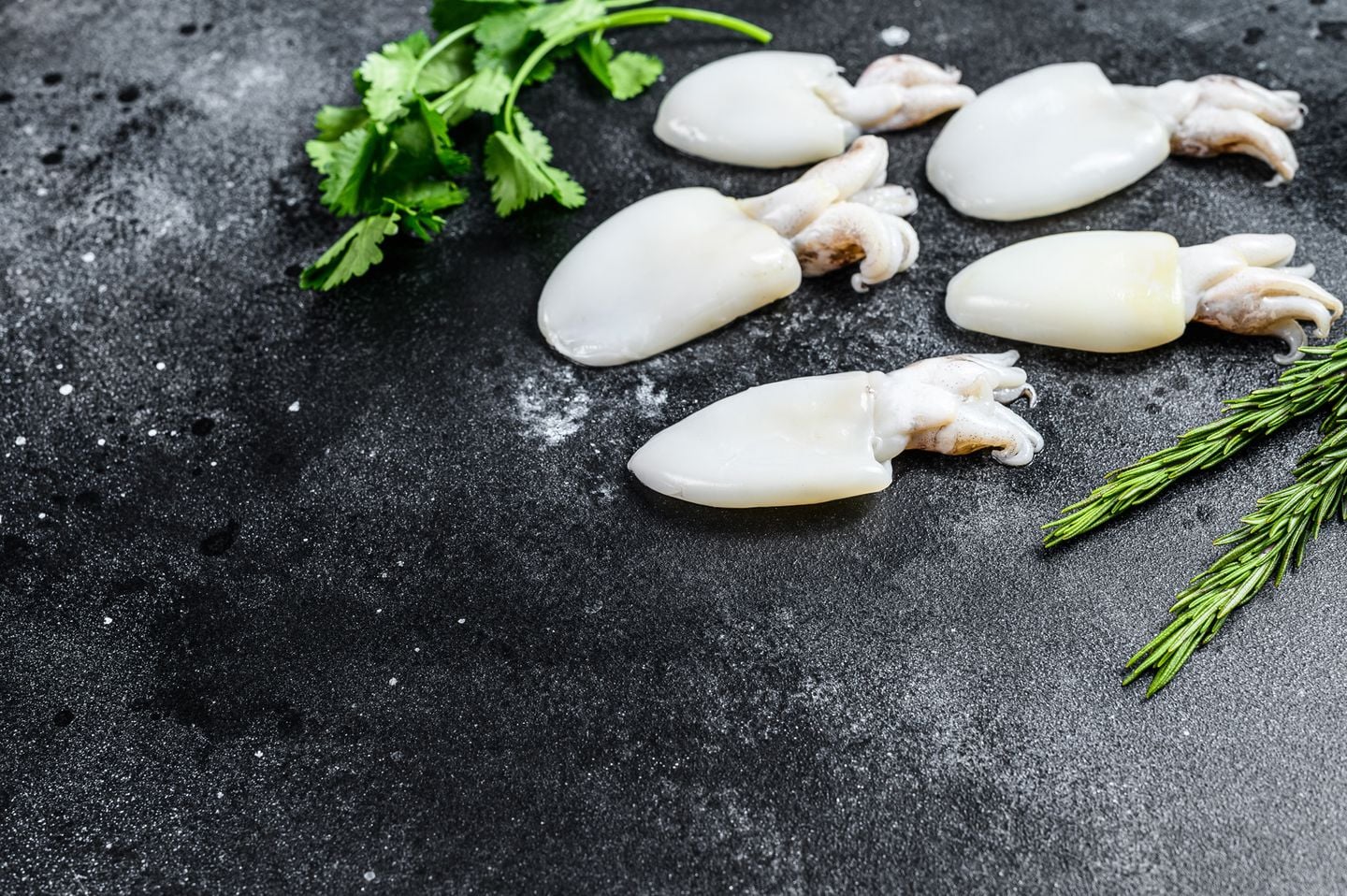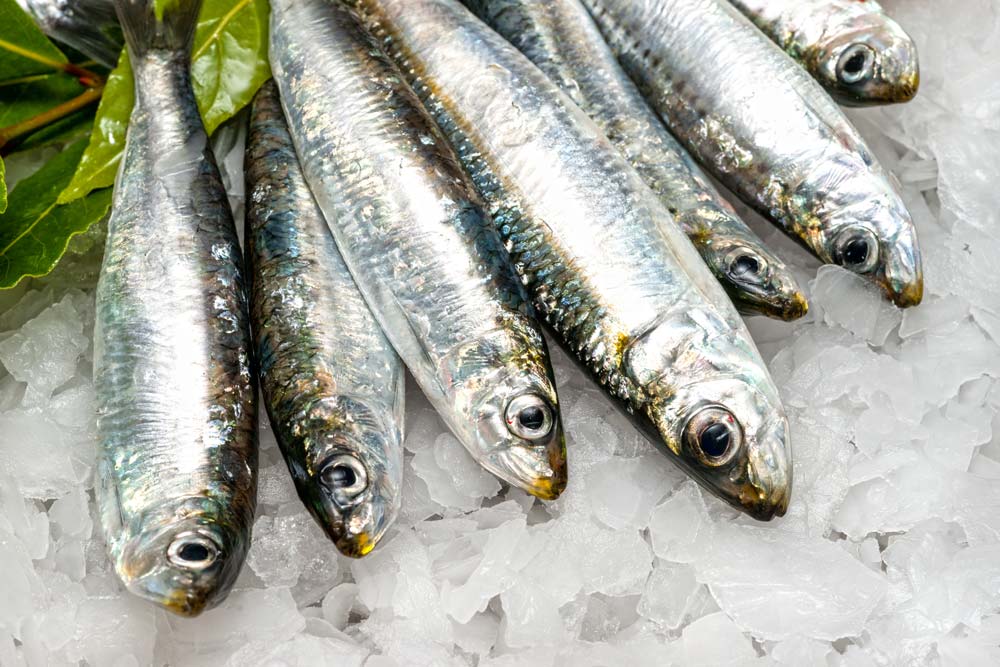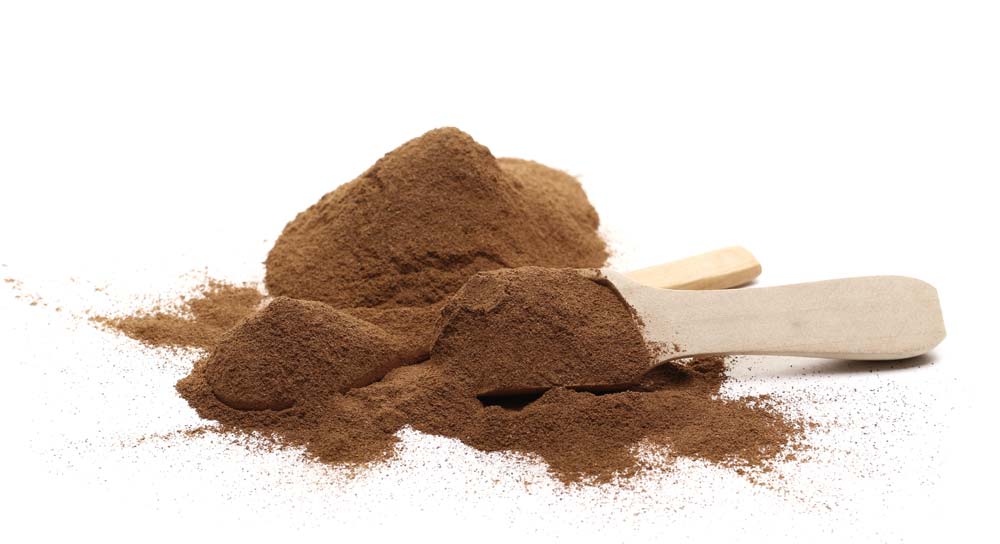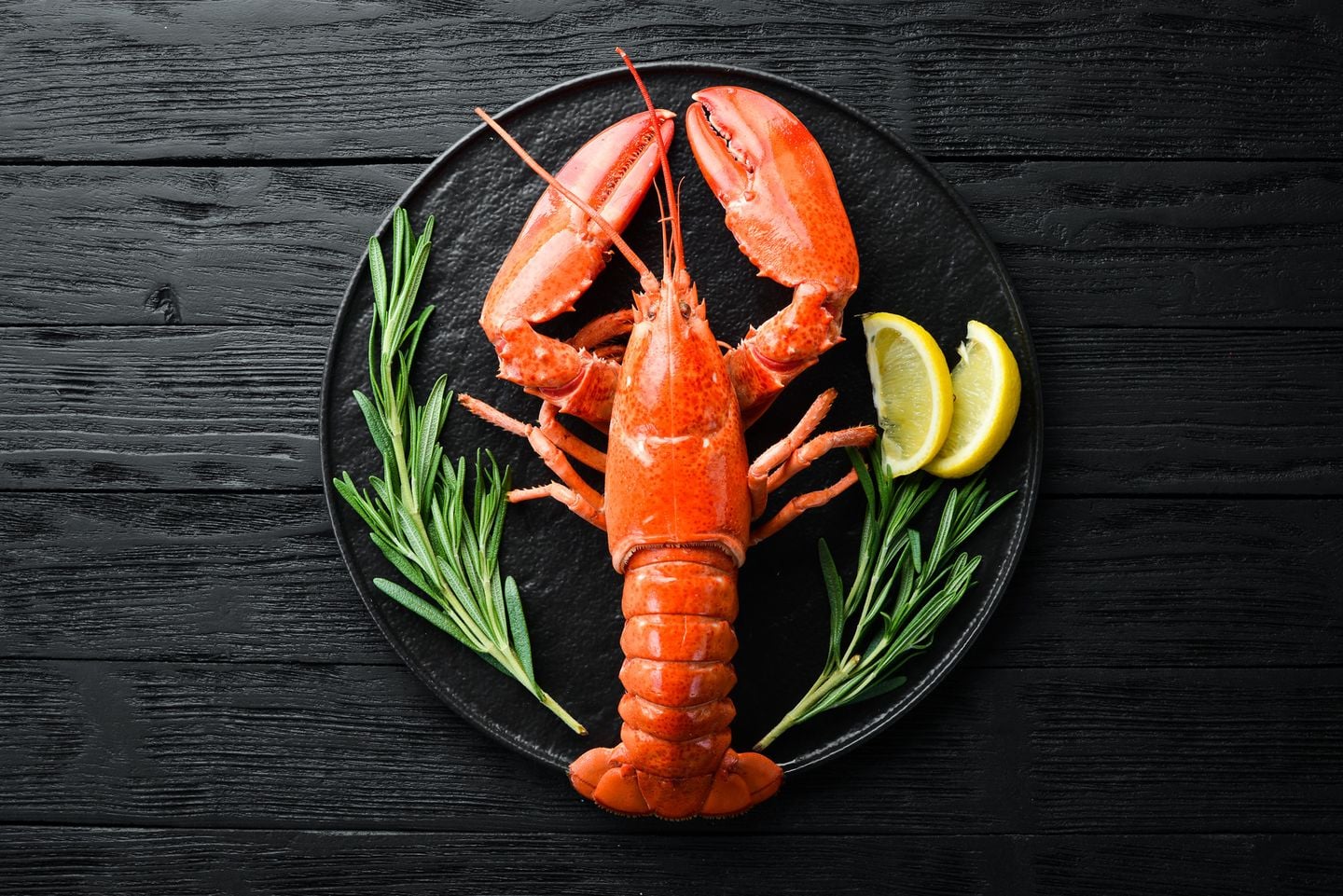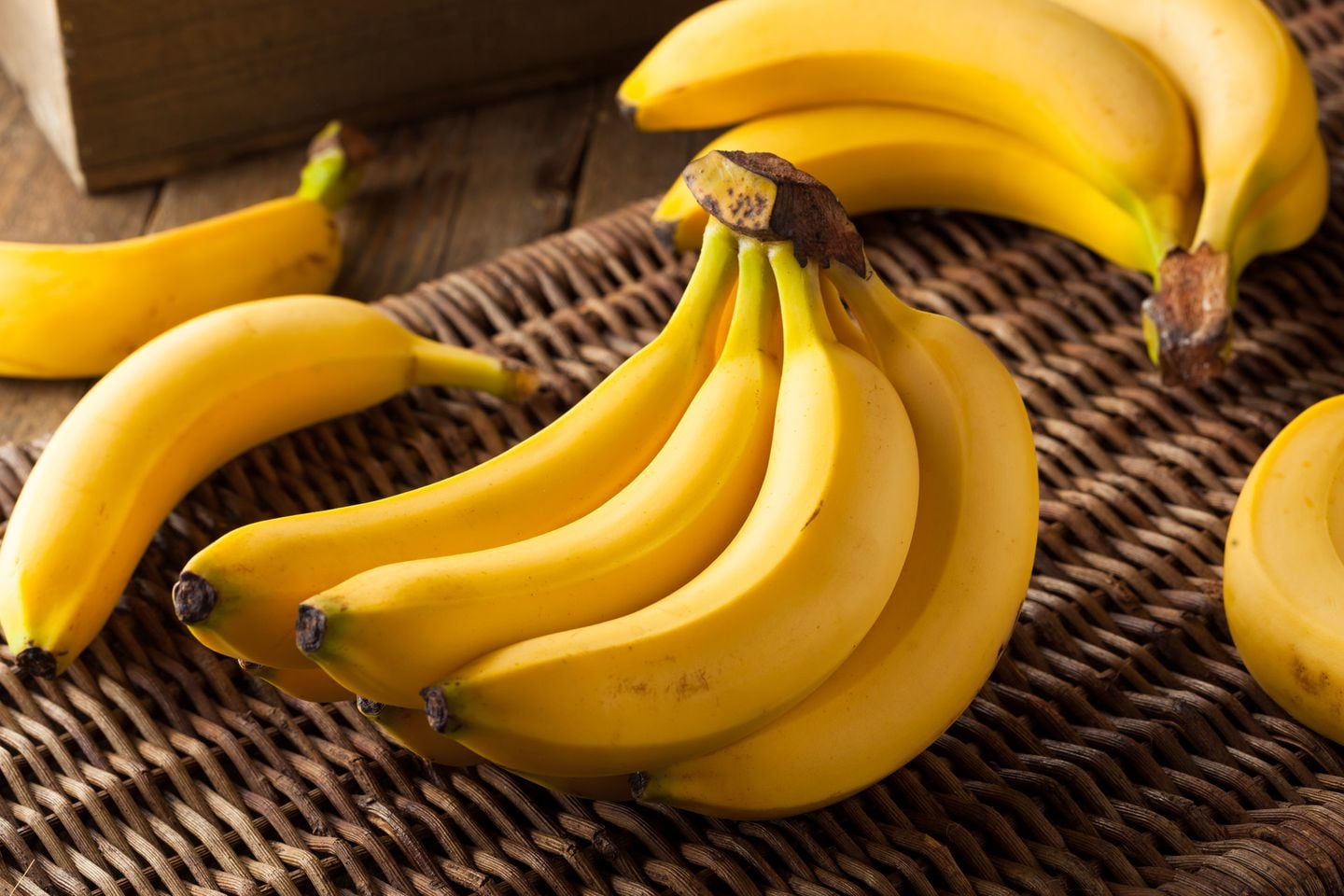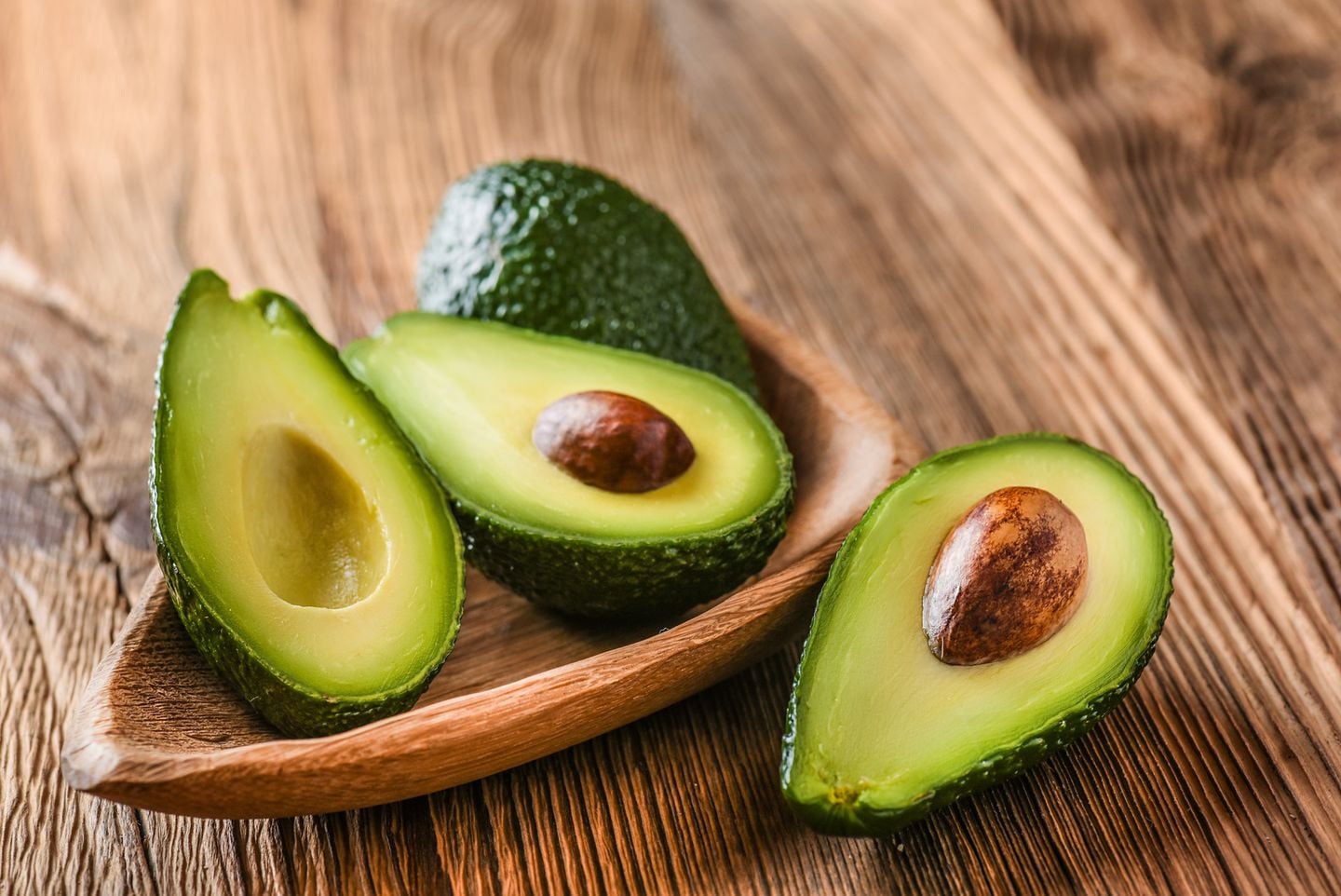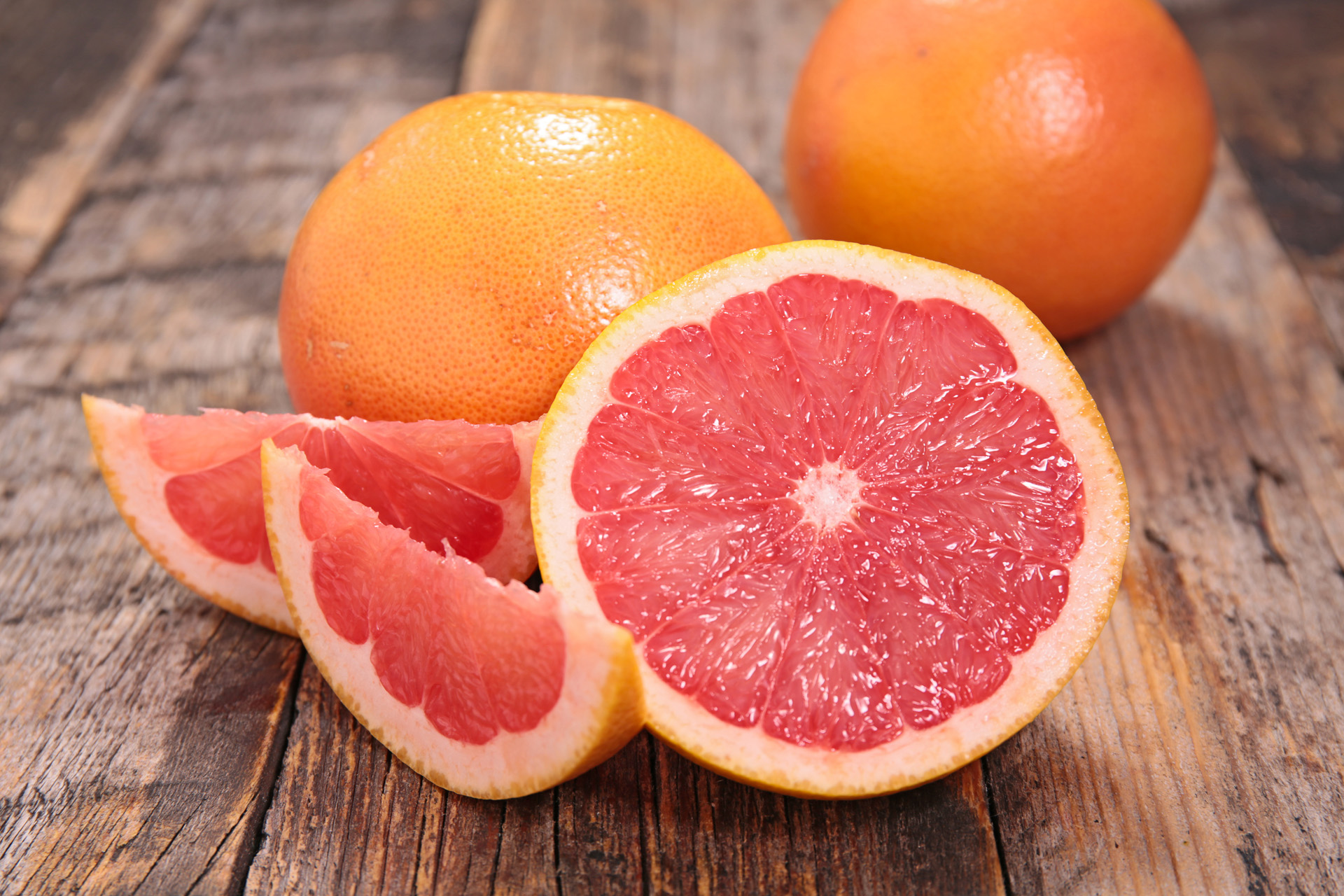Variety of
Moroccan Fish &
Other Products
Select a category
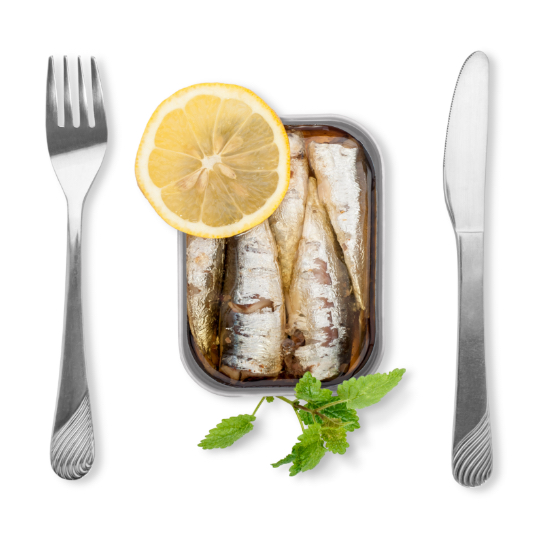
Ficheries
Morocco boasts remarkable assets in fishery resources. Indeed, not only is the country endowed with a splendid coastline (3,500 km), stretching along the Atlantic and the Mediterranean shores, it also enjoys superbly favourable hydro-climatic characteristics.
Algues
Pterocladia Capillacea
Algues,Ficheries
The leaves of this seaweed are of purplish red color and flattened, it measures 2 cm in width and 20 cm in height. These seaweeds are rich in fibers and antioxidants. the seaweeds of Morocco have an exceptional nutritional value and possess a refined taste. They prevent several conditions and are help maintain good health.
Varities
Pterocladia Capillacea
Conditionnement
Bags
Jars
Pots
Punnets
Transformation
- AGAR AGAR
- Raw seaweed
- Seaweed for industrial use
- Medicinal seaweed
- Ground seaweed
 Exportation 2020
Exportation 2020
2,5 T (all algae combined)
Regions
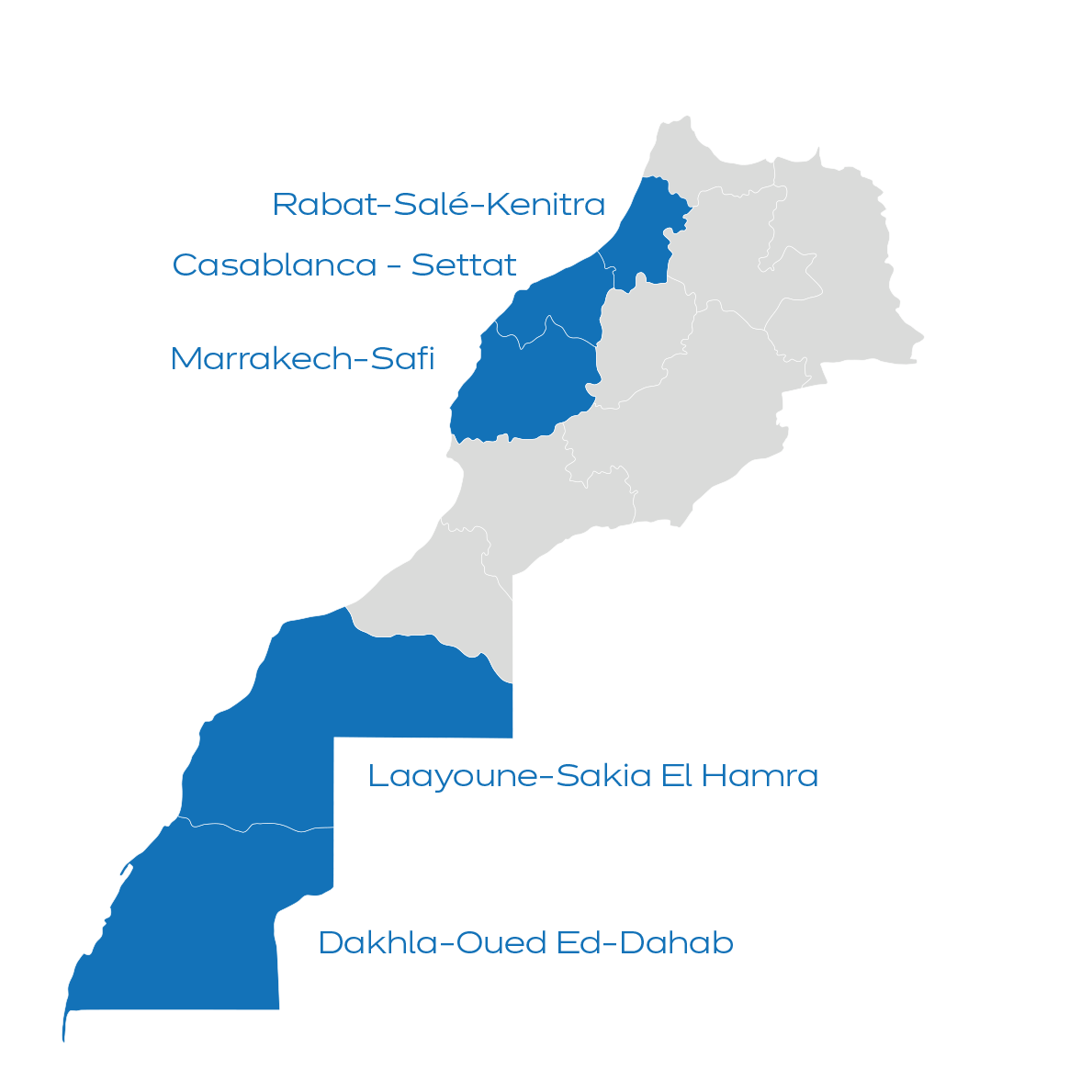
Gelidium Spenilosum
Algues,Ficheries
Gelidium is a type of red algae from the Gelidiaceae family. This species of algae measures between 2 and 6 cm. It has a cartilaginous appearance of a purple color. It comprises 124 species, known by several common names and their size is generally between 2 and 40 cm. Their branching is irregular or in rows on either side of the main thallus. Gelidium produces tetraspores.
Varities
Gelidium Spinosum
Conditionnement
Bags
Jars
Pots
Punnets
Transformation
- AGAR AGAR
- Raw seaweed
- Seaweed for industrial use
- Medicinal seaweed
- Ground seaweed
 Exportation 2020
Exportation 2020
2,5 T (all algae combined)
Regions
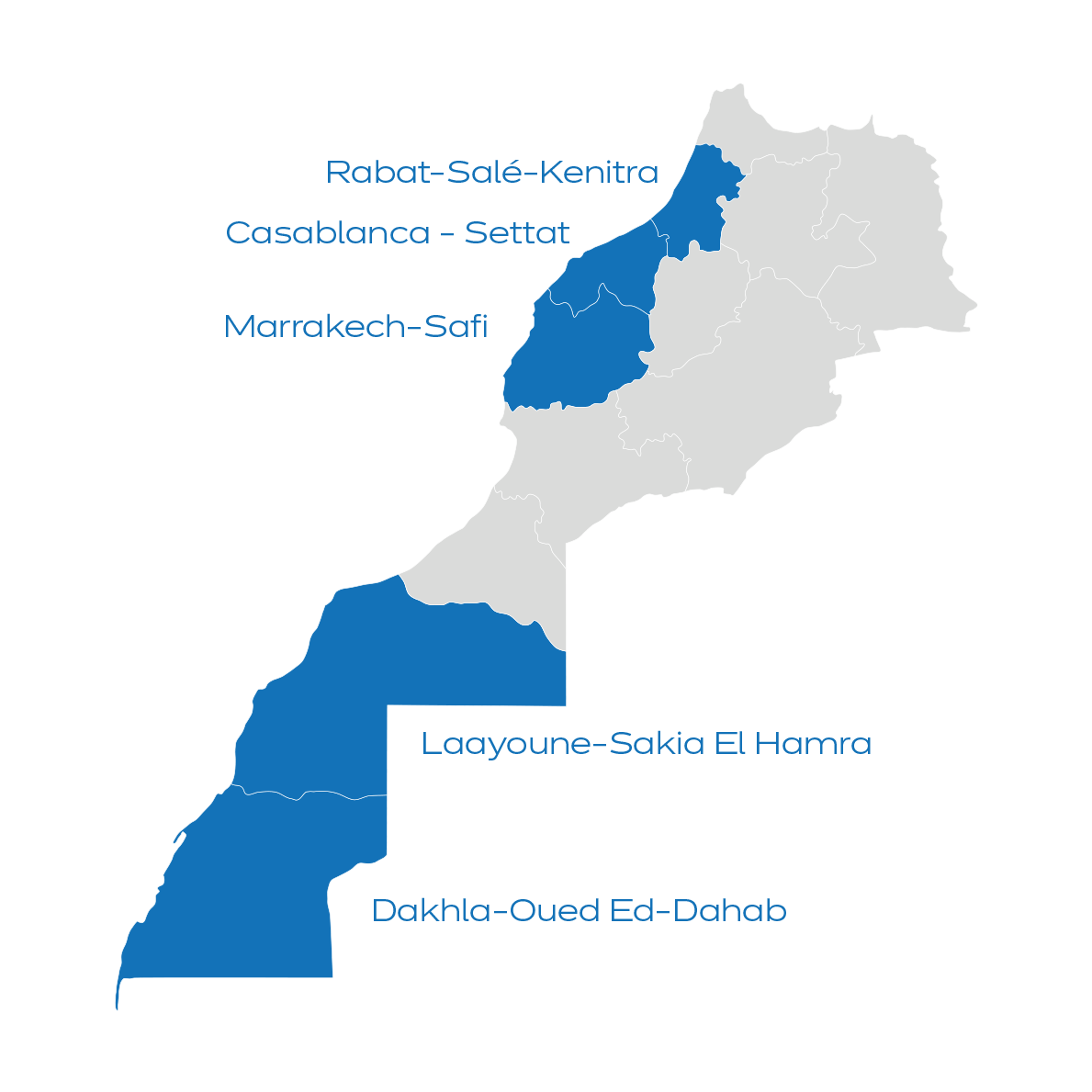
Gelidium Sesquipedale
Algues,Ficheries
Gelidium Sesquipedale is a species of red algae with high commercial value and represents more than 90% of the harvests as it is an important source of agar-agar. It is also called Rebiâa and has the appearance of red thallus with a robust appearence and a cartilaginous consistency. It is composed of a set of fronds in tufts measuring between 10 and 25 cm. It is a thalloid seaweed, branching out on a single axis. Known as a clonal species, it grows in stands on rocky bottoms and in areas with strong water movement and exposure to wave action.
Gelidium sesquipedale is collected by commercial divers in Portugal and Morocco. In Spain and France, this alga is harvested directly from the coasts.
Recently, the species has begun to be used in cosmetic products, as a skin care and sun protection ingredient. This seaweed contains metabolites such as carotenoids, peptides and mycosporin-like amino acids, with antioxidant properties.
Varities
Gelidium Sesquipedale
Conditionnement
Bags
Jars
Pots
Punnets
Transformation
- AGAR AGAR
- Raw seaweed
- Seaweed for industrial use
- Medicinal seaweed
- Ground seaweed
 Exportation 2020
Exportation 2020
2,5 T (all algae combined)
Regions

Cephalopod
Cuttlefish
Cephalopod,Ficheries
The cuttlefish is an extraordinary species, whether by its shape or its lifestyle. In fact, it is considered to be the most intelligent molluscs. The cuttlefish’s meat is famous for its distinctive taste and delicate aroma. It is also rich in nutrients.
Measuring about 20 to 30 cm in length (with the tentacles included), It has an inner float that serves as an endoskeleton. Its head is composed of short arms, each of which is equipped with suction cups, two large tentacles, and two very large eyes.
Similar to other cephalopods, the cuttlefish’s eyes are exceptionally large and complex compared to other invertebrates, allowing it to have a sophisticated vision. In addition, it is equipped with a lateral line that provides further information on its surroundings, both as a predator and prey. With its ability to mimic, cuttlefish can change its colour owing to its skin’s chromatophores, which are controlled by the brain. It ejects a black liquid called sepia through a specific organ, the funnel (leading into the mantle cavity). This liquid, also named “ink” or “squid ink”, allows it to hide so it can escape.
Varities
Common cuttlefish (Sepia officinalis)
Conditionnement
Frozen
Ice box
In bulk
Vacuum pack
Transformation
- Frozen cuttlefish fillet
- Sepiola (little cuttlefish) glands and frozen squid
- Marinated cuttlefish
- Frozen sepiola and squid
- Live and fresh sepiola and squid
- Live sepiola and squid
 Exportation 2020
Exportation 2020
30 000 T
Regions

Squid
Cephalopod,Ficheries
Squid, also called calamari, is one of the most captured species in Morocco. It has a distinct head with a bilateral symmetry, a mantle, a perioral crown of muscular and protractile arms fitted with suction cups and/or hooks. Its tentacles are shorter than its long, tapered body. Squids have colonised all of the world's oceans and most seas. They are found in abundance on the Moroccan coasts. The size of the squid ranges between 10 and 50 cm. There are records of More than 300 species that live in all the oceans and seas of the planet, most often in groups, some near the coasts, others in the depths of the sea.
Squid is low in fat and high in protein. It is a good source of copper, selenium, and vitamin B12.
Varities
Northern shortfin squid
Conditionnement
Frozen
Ice box
In bulk
Vacuum pack
Transformation
- Frozen calamari rings
- Calamari with sauce
- Frozen squid
- Marinated calamari
- Non-living fresh squid
- Live squid
- Fresh squid fillet
- Frozen squid tube
 Exportation 2020
Exportation 2020
28 000 T
Regions

Octopus
Cephalopod,Ficheries
As one of the most fished varieties in Morocco, the octopus stands among the emblematic species in the Moroccan coasts. It is popular among all consumers, rich in nutrients, and plays an important role in the body's equilibrium. Morocco ranks among the world’s leading octopus exporters.
The octopus is a marine invertebrate of the cephalopod family that can be recognised by its 8 tentacles of equal size, lined with two rows of suction cups. This shell-less mollusk is considered one of the most intelligent of its kind and measures between 5 cm and 3 meters in length.
Generally, the octopus lives in the coastal waters of warm and temperate seas. It has a benthic way of life and takes shelter in rocky crevices.
Varities
Curled octopus (Elledone Cirrhosa)
Musky octopus (Elledone Moschata)
Common octopus (Octopus Vulgaris)
White-spotted octopus (Octopus Macropus)
Conditionnement
Frozen
Ice box
In bulk
Vacuum pack
Transformation
- Non-living octopus
- Fresh non-living octopus
- Live octopus
- Frozen octopus
- Frozen cooked octopus
- Marinated octopus
- Frozen octopus tentacles (patas)
 Exportation 2020
Exportation 2020
50 000 T
Regions

Pelagic
Swordfish
Ficheries,Pelagic
The swordfish is a large pelagic and migratory fish. it is easily spotted thanks to its large flattened rostrum. It can measure up to 4.50 m and weigh several hundred kilograms as an adult.
Its size ranges between 80 cm and 3.50 m, and it lives between the surface and 800 meters deep.
The Moroccan swordfish is rich in minerals, phosphorus, iron, and potassium. It also provides vitamins B12 and B16.
Varities
Atlantic white marlin
Blue marlin
Black marlin
Atlantic sailfish
Conditionnement
Frozen
Ice box
In bulk
Vacuum pack
Transformation
- Fresh swordfish
- Frozen swordfish
 Exportation 2020
Exportation 2020
1700 T
Regions
Canned sardines
Ficheries,Pelagic
Moroccan canned sardines are rich in proteins and vitamin B12. Before being canned, the sardines' heads are removed, then they are gutted and cooked, with the free space in between filled with vegetable oil or other marinades. Moroccan canned sardines are quality-oriented and have acquired several international certifications.
Varities
Sardina pilchardus
Conditionnement
Cans
Transformation
- Canned with water
- Canned with broth
- Canned with oil
- Canned with tomato sauce
 Exportation 2020
Exportation 2020
170 000 T
Regions

Tuna
Ficheries,Pelagic
Tuna is a large pelagic fish that has red coloured flesh. It can measure between 50 cm and 1.50 m, and in some cases, it can measure up to 3 m. In adulthood, its weight can reach up to 400 kgs.
Moroccan bluefin tuna contains Omega 3 which plays an important role in the prevention of cardiovascular diseases.
Known as a swift swimmer, it is a heavily consumed fish, which explains its endangerment as a species.
Tuna is a fish that lives in schools in almost all temperate seas around the world and feeds on small fish. In spring, it migrates across thousands of kilometres to feed or breed.
Varities
Yellowfin tuna (Thunnus albacares)
longfin or white tuna (Thunnus alalunga)
Skipjack tuna
Blackfin tuna (Thunnus atlanticus)
Bigeye tuna (Thunnus obesus)
Bluefin tuna
Conditionnement
Cans
Frozen
Ice box
In bulk
Jars
Vacuum pack
Transformation
- Tuna fillets in olive oil
- Tuna fillets in oil and tomato
- Tuna fillets in vegetable oil
- Tuna flakes in oil and tomato
- Tuna flakes in vegetable oil
- Pieces of tuna in vegetable oil
- Pieces of tuna in vegetable oil with chili
- Pieces of tuna with tomato and chili
- Whole tuna in olive oil
- Whole tuna in chili oil
- Whole tuna in vegetable oil
- Whole tuna in sauce
- Whole tuna in tomato sauce
- Whole tuna in spicy tomato sauce
- Whole tuna in brine
- Whole tuna in brine and lemon
 Exportation 2020
Exportation 2020
1800 T
Regions

Horse mackerel
Ficheries,Pelagic
Horse mackerel (Trachurus trachurus) is a fish species of the family Carangidae . It is a pelagic species and can be found in the Atlantic Ocean and the Mediterranean Sea. The horse mackerel is distinguished by a very indented caudal fin and bony scutes (in the posterior lateral line), highlighting its silvery sheen. It stays in coastal waters for its first two years, then moves to the continental shelf. It does not return to the coast until adulthood, during its summer migration. The male becomes sexually mature at 3 years old, when it measures approximately 20-22 cm, while the female reaches sexual maturity at 4 years old, when it measures 26-30 cm. The horse mackerel can live up to 15 years. Like all other small pelagic fish, horse mackerel populations are sensitive to environmental changes.
Varities
Yellowtail horse mackerel
Blue horse mackerel
Cunene horse mackerel
European horse mackerel
Conditionnement
Frozen
Ice box
In bulk
Vacuum pack
Transformation
 Exportation 2020
Exportation 2020
10 000 T
Regions

Anchovies
Ficheries,Pelagic
In Morocco, this species is called Lanchouba. it has an elongated and slender body. The sides and underbelly are silver-coloured, while the back is blue-green, with a blue-grey stripe sometimes extending between the back and the sides.
The anchovy is a real healthful food, as it contains a large amount of Omega 3. Morocco's anchovies is also rich in vitamins and proteins of high biological value.
The Engraulis Encrasicolus anchovy is the most used in semi-preserved units in Morocco. It is mainly processed through salting, drying, and smoking.
The "anchoving" technique in Morocco has continued to develop over time according to culinary habits to reach its perfect state in Moroccan units.
Canned anchovies provide high biological value and can be stored for a very long time. These small fish contain fats that are beneficial to the heart and blood vessels. These pelagic fish are also rich in vitamin A, iron, and vitamin PP.
Varities
Engraulis encrasicolus
Conditionnement
Cans
Jars
Palette
Transformation
- Salted anchovies
- Anchovies in vinegar
- Anchovies in oil
- Anchovies in brine
- Blanched anchovies
- Tapas
- Marinated anchovies
- Anchovy fillet
- Anchovy flakes
- Anchovies with olives
- Anchovy paste
- Octopus with anchovies
- Anchovy pieces
- Anchovy cream
- Anchovy skewers
- Anchovy banderillas
- Fried anchovies
- Anchovy bits.
 Exportation 2020
Exportation 2020
18 000 T
Regions

Mackerel
Ficheries,Pelagic
In Morocco, this species is called Kabaila or Zaroug. It can live in the surface to under 300 meters in deep waters. Its common size ranges between 15 and 30 cm.
The mackerel is rich in vitamins B and D, as well as minerals such as iron, iodine, and selenium. It is also a very good source of Omega 3.
During the warmer months, it forms large schools and rises to the surface, not far from the coast. Visually speaking, the mackerel has multiple fins and a slender, elongated body covered with small scales. It measures on average between 18 and 30 cm and weighs around 250-300 grams. Some specimens may exceed 3 kg.
Moroccan mackerel is available in cans to be eaten anytime, anywhere. Canned mackerel has seen remarkable development in recent years.
Varities
Scomber scombrus (common mackerel)
Conditionnement
Frozen
Ice box
In bulk
Vacuum pack
Transformation
- Fillet
- Tapas
- Canned
- Frozen
 Exportation 2020
Exportation 2020
70 000 T
Regions

Sardine
Ficheries,Pelagic
Thanks to its exposure to both the Atlantic Ocean and the Mediterranean Sea (3,500 km-long coastline), Morocco has an important stock of fishery resources. Morocco's fish production is constantly evolving. This growth is mainly due to its flagship species, Sardina pilchardus Walbaum, of which Morocco is both the leading producer and exporter in the world.
The sardine is the most abundant and affordable species of fish in Morocco. The sardine, which belongs to the Clupeidae family, is the pride of Morocco. It can be fried, grilled, cooked in tagine, or directly consumed from the can.
As an active member of the Sardina Pilchardus International Committee, Morocco constantly ensures the non-fraudulent use of this name in order to protect the Sardina pilchardus.
The sardine is characterised by a streamlined body, a silvery back, golden sides, and a white underbelly. The common size of the sardine varies between 15 and 20 cm and can reach a maximum size of 25 cm.
Varities
Sardina pilchardus
Conditionnement
Frozen
Ice box
In bulk
Vacuum pack
Transformation
- Fillet
- Banderillas
- Sardine balls
- Smoked sardines
- Ground sardines
- Breaded sardines
- Tapas
 Exportation 2020
Exportation 2020
360,000 tonnes (aggregated numbers)
Regions

Processed products
Fishmeal
Ficheries,Processed products
The activity of fishmeal production emerged in Morocco decades ago, it occupies an important position in the country's economy.
The fishmeal production units are located mainly in Safi, Essaouira, Agadir, Tan-Tan and Laâyoune, and have a large processing capacity.
This industry has gained international recognition today for its good quality and production levels.
The powder is derived from fish, usually Sardine (Sardina Pilchardus), Mackerel or other sea animals, it is obtained by separating the liquid phase (water and lipids, extracted by cooking/pressing) and protein, then by grinding and drying.
Fishmeal is mainly used as a feed ingredient in aquaculture, poultry and livestock farming.
Fishmeal is a concentrated source of energy and is rich in protein, calcium, phosphorus, vitamin A and D.
Fishmeal is a solid product (powder) obtained by a process that targets the solid, oily and aqueous fractions of the raw materials and by extracting a large part of the water and oils.
Varities
Conditionnement
Bags
Boxes
Transformation
Non-human food
 Exportation 2020
Exportation 2020
160 000 T
Regions
Fish oil
Ficheries,Processed products
The activity of producing fish oil started in Morocco decades ago. It occupies an important position in the country's economy. Fish oil is produced mainly from sardines, but also from mackerel, horse mackerel and anchovies.
The production units of fish oil are located mainly in Safi, Essaouira, Agadir, Tan-Tan and Laâyoune, and have a large processing capacity.
This industry has gained international recognition nowadays for its good quality and production levels.
Morocco has a great profusion of fish oil which is the primary factor in the production of omega 3.
The oil is used, in addition to aquaculture, in human food and in the pharmaceutical, dietetic and cosmetic industries. It is extracted from species particularly rich in polyunsaturated fatty acids.
Exported in its raw state, the Moroccan fish oil benefits from a specialised know-how and the use of technological equipment, leading to appropriate finished products catering to the needs of different users.
Varities
Conditionnement
Bottles
Capsules
Containers
Transformation
Non-human food
 Exportation 2020
Exportation 2020
46 000 T
Regions
Seashells
Scallop
Ficheries,Seashells
The scallop, also called Pecten maximus, is a species of marine bivalve mollusks from the family Pectinidae (which includes over 300 species). it is recognisable by its big size compared to the other species of the Pecten genus, for it can reach up to 15 cm of diameter .
The scallop's colour ranges between beige and brown, and it has a unequivalve shell: the upper valve is flat and the lower valve is bulging. This mollusc is renowned for its fine and delicate flesh. Very valued by food lovers, the scallop is used to create refined and original recipes. In terms of nutrition, scallops have many advantages, starting with their high quality protein and their low fat percentage, making them a slimming nutrient and a great health ally.
Varities
Pecten maximus
Conditionnement
In bulk
Punnets
Vacuum pack
Transformation
- Fresh
- frozen scallops
- marinated
- cooked
 Exportation 2018
Exportation 2018
0,02 Tonnes EN 2018
Regions

Razor Clams
Ficheries,Seashells
The razor clam is a shellfish belonging to the Solenidae family. It owes its name to its knife handle shape. Rich in protein, this 10-20 cm long mollusk lives buried in the sand and is harvested during low tides along the Atlantic coast. It can be identified by the small keyhole-shaped holes it forms in the sand. The razor clam can come out of its hiding place by pouring a little salt into its hole.
Razor clams live in the sand by digging a hole about 80 cm deep. These mollusks can be caught only during the tides with a coefficient higher than 90.
Razor clams are very tough; They hold very well to the hook and can require a strong cast.
Varities
the arcuate razor clam (E. arcuatus)
the European straight razor clam (E. marginatus)
the saber razor clam (E. ensis)
the silique razor clam (E. siliqua)
the American jackknife clam (E. directus)
Conditionnement
In bulk
Punnets
Vacuum pack
Transformation
Fresh
 Exportation 2020
Exportation 2020
250 T
Regions
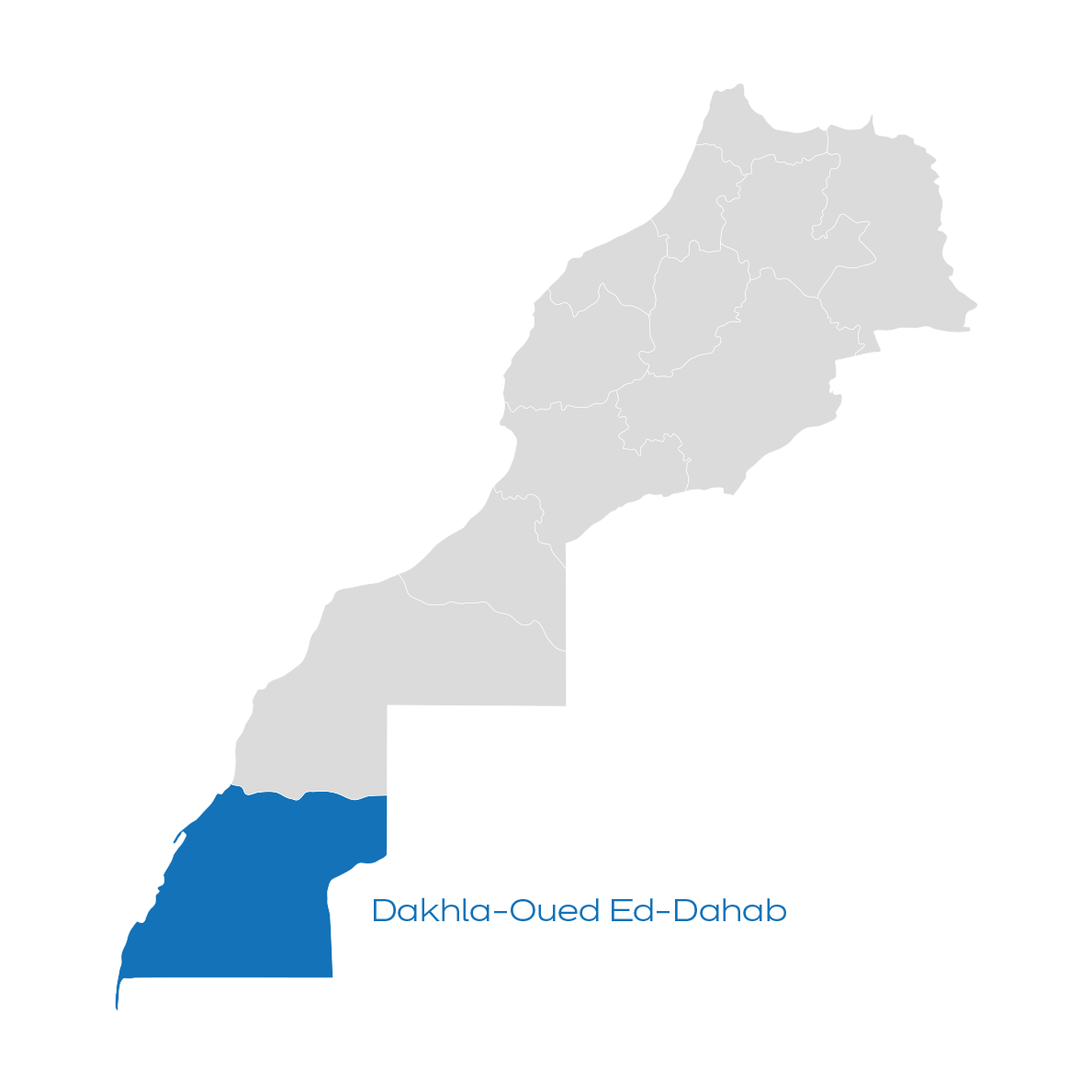
Winkle
Ficheries,Seashells
Littorina littorea, better known as winkle, is a marine molluscan gastropos species of the genus Littorina. The winkle has a soft body and a spiral, conical, pointed shell. The winkle is easily recognised thanks to its smooth, black and regularly rolled shell. It is a herbivorous grazer, which feeds on green algae and diatoms. It moves by crawling on its feet.
There are many species of winkles (belonging to the family of marine gastropods), but the one that is consumed is the common grey winkle measuring from 1 to 2 cm.
Varities
common grey winkle
Conditionnement
In bulk
Punnets
Vacuum pack
Transformation
- Fresh winkle
- Frozen winkle
 Exportation 2020
Exportation 2020
65 T
Regions

Clams
Ficheries,Seashells
The clam is a vernacular name for various sea bivalve molluscs, such as Ruditapes decussatus (common or European clam), Venerupis, and Ruditapes philippinarum3 (Manila clams, the most common in food). The clam is a bivalve mollusc that belongs to the Veneridae family and that particularly likes sandy bottoms where it buries itself deeply in order to escape its predators.
The clam is a genuine source of several minerals including iron, selenium, manganese, copper, zinc and phosphorus. These characteristics, combined with its high protein and low fat percentages, give clams a guaranteed spot in every healthy diet.
Varities
Ruditapes decussatus
the Venerupis
Ruditapes philippinarum3
Conditionnement
In bulk
Punnets
Vacuum pack
Transformation
- Fresh clams
- Frozen clams
- Shelled clams
- Marinated clams
 Exportation 2020
Exportation 2020
75 T
Regions

Oysters
Ficheries,Seashells
Oysters have a firm and crunchy flesh. Moroccan oysters benefit from waters rich in plankton, perfectly adapted to their breeding.
Thanks to an exceptional heritage, these mollusks are rich in vitamins as well as several other nutrients.
The oyster is a bivalve mollusc of the Ostreidae family and more widely of the Ostreidae super-family. Rich in vitamin B12, copper, iron and zinc, oyster has a higher lipid content compared to other seafood. These sessile mollusks are natural inhabitants and are attached to a rocky substrate.
For cooking, osyters are eaten raw and accompanied by lemon juice or shallot vinegar. The oyster's fine and iodized flesh is not limited to this use only. In fact, the oyster can also be eaten as a tartar, whether with or without meat, baked or steamed.
Varities
Conditionnement
In bulk
Punnets
Transformation
- Fresh Oysters
- Fresh oyster meat
- Pasteurized oyster meat
- Frozen oysters on half shell
- Frozen oysters in their shells
- Canned oysters
- Smoked oysters
 Exportation 2020
Exportation 2020
8 T
Regions

Mussels
Ficheries,Seashells
Very popular between the Mediterranean and the Atlantic, with a unique cultivation and processing method and traditional harvesting methods which have earned them great success, Moroccan mussels are particularly rich in amino acids and iron.
Mytilida, more commonly known as mussels, is an order of bivalve molluscs. The mussel has a black and smooth shell. Thanks to its two powerful muscles, it opens to let water in and closes to protect itself from predators.
Rich in omega-3, phosphorus and trace elements, the mussel is a good source for protein and vitamin B. Low in calories, the musslel has a soft, orange body protected by a calcareous shell composed of two parts.
There are several varieties of mussels that can be both wild and farmed.
While the wild mussel is still harvested in various parts of the world, the cultivated mussel is gaining more popularity since it is generally larger and more fleshy, and its flesh contains less sand and fine gravel. The main cultivated species are the Atlantic blue mussel, (M. edulis), the Mediterranean blue mussel (M. galloprovincialis), the Pacific blue mussel (M. trossulus) and the Asian green mussel (Perna viridis).
Varities
the Atlantic blue mussel (M. edulis)
the Mediterranean blue mussel (M. galloprovincialis)
the Pacific blue mussel (M. trossulus)
the Asian green mussel (Perna viridis).
Conditionnement
In bulk
Punnets
Vacuum pack
Transformation
- Live mussels in shell
- Fresh shelled mussels
- Marinated mussels
- Frozen mussels
 Exportation 2017
Exportation 2017
1 T
Regions
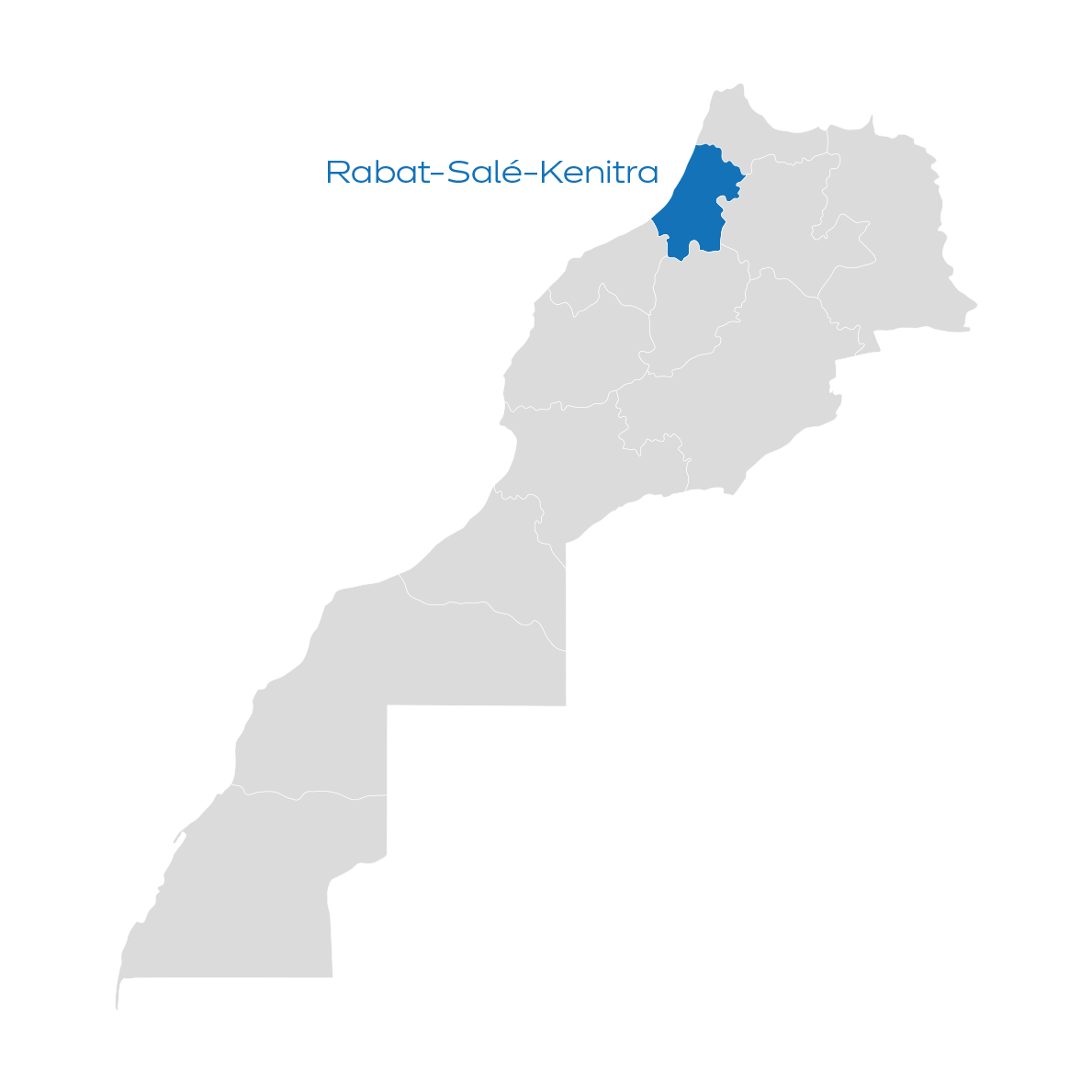
Shellfish
Homarus
Ficheries,Shellfish
Considered the most luxurious of all seafood, homarus is a highly valued dish by food enthusiasts who appreciate it for its fine meat and delicate taste. Homarus is a lobster-like crustacean living in the sea. It has a dark blue color and is characterized by its robust body. Homarus is 23-50 cm, long and can even reach 65 cm. It lives on rocky bottoms up to 150 meters deep.
Homarus is very nutritious. It contains zinc, selenium, copper and vitamin B12.
Homarus can be easily distinguished from lobster by its imposing claws and its less spiny carapace. Covered by an articulated carapace, its body is divided into two parts: the cephalothorax (or head, or chest) and the abdomen (tail).
In cooking, homarus does not need much work to look breathtaking, and is perfect for all combinations. From the nutritional point of view, homarus is particularly interesting for its flesh high in protein and low in lipids.
Varities
European homarus
American homarus
Cape homarus
Conditionnement
Cans
Frozen
Vacuum pack
Transformation
- Fresh live homarus
- Fresh whole homarus
- Fresh non-whole homarus
- Cooked
- Shelled
- Homarus meat
- Homarus bisque
- Fumet
 Exportation 2020
Exportation 2020
20 T
Regions

Crab
Ficheries,Shellfish
The term “crab” refers to the walking decapods, the crustaceans that are able to swim in water and walk on land. Crabs are characterised by a relatively small abdomen, tucked under a rigid and rounded carapace (shell), and five pairs of legs. The crab’s main pair of legs are equipped with strong claws that they use to grip and crush their prey. It also walks sideways, allowing it to be faster. Some crabs dig burrows in the sand and crawl out so swiftly that they are named ghost crabs.
Varities
Spinous spider crab or spider crab
Snow crab
Blue crab
Green crab or Common Shore crab
King crab
Rock crab
Nordic crab
Swimming crab or woolly crab
Edible crab or Dungeness crab or Cancer pagurus
Land crab
Conditionnement
Cans
Frozen
In bulk
Transformation
- Fresh crab
- Frozen crab
- Frozen cooked crab meat
- Frozen crab meat
- Surimi
 Exportation 2020
Exportation 2020
40 T
Regions

Norway lobster (Langousitine)
Ficheries,Shellfish
The Norway lobster/langoustine possesses a tubular body, ranging from 10 to 24 cm, and a shell equipped with a well-developed rostrum. It lives in deep waters ranging between 20 and 800 m.
The Norway lobster is an excellent source of proteins, and it also provides phosphorous, magnesium, calcium, trace elements, and several vitamins.
Believed to be a crustacean of the Decapods order, of the Macrurans suborder, the langoustine is closer to the lobster than the spiny lobster even if the name suggests otherwise. High in calcium, iron, and phosphorous, langoustine’s meat is particularly prised and low in calories (when eaten without the head). The common langoustine inhabits sandy bottoms, near the continental shelf, in deep waters ranging from 15 and 800 meters.
Varities
King langoustine
Common langoustine
Conditionnement
Ice box
Transformation
- Fresh Norway lobster
- Frozen Norway lobster
 Exportation 2020
Exportation 2020
120 T
Regions

Spiny lobster
Ficheries,Shellfish
The spiny lobster is a large crustacean that measures between 20 and 40cm. it is characterised by an elongated body, segmented with white spots on the body. It is found from Agadir to Cap Blanc.
The spiny lobster contains a lot of protein and is low in calories. It has group B vitamins, mineral salts, and trace elements.
The spiny lobster is a large seawater crustacean that belongs to the Palinuridae family. It is distinguished by the lack of claws (however, its front pair of legs helps with gripping), and its long antennae. It uses the spines on its shell and antennae as a useful shield. The exceptional quality of the lobster meat and its relative rarity depending on the stocks justify its price.
Varities
Red spiny lobster
White spiny lobster
Pink spiny lobster
Cape rock lobster
Conditionnement
Eau
Ice box
In bulk
Vacuum pack
Transformation
- Whole fresh spiny lobster
- Whole frozen spiny lobster
- Frozen spiny lobster tails
 Exportation 2020
Exportation 2020
300 T
Regions

Shrimp (grey and pink)
Ficheries,Shellfish
The deep-sea pink shrimp is the most famous type, it is a decapod crustacean that measures between 8 and 16 cm and lives between 20 and 700 meters deep.
Rich in protein and low in fat, it is a source of vitamins, phosphorus, and iodine. It also contains Omega 3, which is essential for the human body. Shrimp is the subject of intensive and industrial fishing. It is also intensively farmed.
The consumption of shrimp around the world is very high.
The body of a shrimp consists of two parts:
- The cephalothorax, frequently known as the “head”, contains the shrimp’s teeth, sensory organs (eyes and antennae), and four pairs of walking legs that enable it to move on sandy sea beds. The first pair of legs end in claws, that vary in development depending on the species;
- The abdomen, usually called the “tail”, represents the edible part of the shrimp. It is articulated and equipped with two swimmerets.
The whole is covered with a shell whose colour varies according to the species.
Varities
Grey shrimp
Pandadilae spp shrimp
Red salicoque shrimps
Whiteleg shrimps
King prawns
Conditionnement
In bulk
Plastic bags
Vacuum pack
Transformation
- Fresh grey shrimps
- Frozen peeled shrimps
- Frozen pandadilae spp. (species pluralis)
- Frozen red prawns
- Frozen grey shrimps
- Shrimp shells
- Ungrounded grey shrimps skin
- Frozen king prawns
- Other varieties of fresh shrimps
- Other varieties of frozen shrimps
- Peeled and marinated whiteleg shrimp skewers
- Peeled cooked shrimp
- Refrigerated peeled and cooked shrimp
 Exportation 2020
Exportation 2020
9 000 T
Regions

White fish
Sole
Ficheries,White fish
It has an elongated oval body and a very arched small mouth, with several taste buds in front of the head.
Considered one of the best and finest species for its incomparable flavour, Moroccan sole is certainly a favourite among flatfish lovers.
The sole is a relatively low-fat flatfish. The common sole has an oval body, around which the dorsal and anal fins form a fringe. On one side, its skin is creamy white, and on the other, brown, and it is on this side of its head that its eyes are located. When it reaches maturity and becomes able to reproduce, it measures 32 to 35 cm. However, if it escapes capture, it can live long enough to reach 70 cm.
When it is active at night, its lower fin allows it to feel the movements of its prey on the sandy seafloor, while during the day, it burrows under the sand away from predators. The sole can live up to 25 years and reach sexual maturity between 2 and 5 years of age. It lives in the Atlantic Ocean, the Mediterranean Sea, and the Pacific.
Varities
Common sole
Senegalese sole (Solea senegalensis)
Sand sole (Pegusa lascaris)
Thickback sole (Microchirus variegatus)
Conditionnement
Frozen
Ice box
In bulk
Vacuum pack
Transformation
- Fresh sole
- Frozen sole
- Frozen emptied peeled sole
 Exportation 2020
Exportation 2020
2400 T
Regions

Sea bream
Ficheries,White fish
Sea bream is a semi pelagic fish, characterised by an oval shape that is laterally compressed, a head with an almost straight profile, a pointed snout, and a rather small mouth in a low and sloped position.
Living near the bottom, it frequently roams in coastal waters, on various seafloors (rocks, gravel, sand, or mud). It is found between 5 and 200 m deep in the Mediterranean Sea and up to 300 m deep in the Atlantic, but most often it is found between 20 and 100 m. It migrates in deeper water during the winter. Sometimes, it enters ports.
It is a common fish whose usual length is 15 to 30 cm, with the maximum known size being 60 cm. The specimens observed by divers are generally smaller than those marketed, caught in the circalittoral* level often below 100 m.
Varities
Red pandora
Pagellus acarne
Common pandora
Royal sea bream
Conditionnement
Frozen
Ice box
In bulk
Vacuum pack
Transformation
- Fresh sea bream
- Fresh fake sea bream
- Frozen sea bream
- Frozen common sea bream
 Exportation 2020
Exportation 2020
165 T
Regions
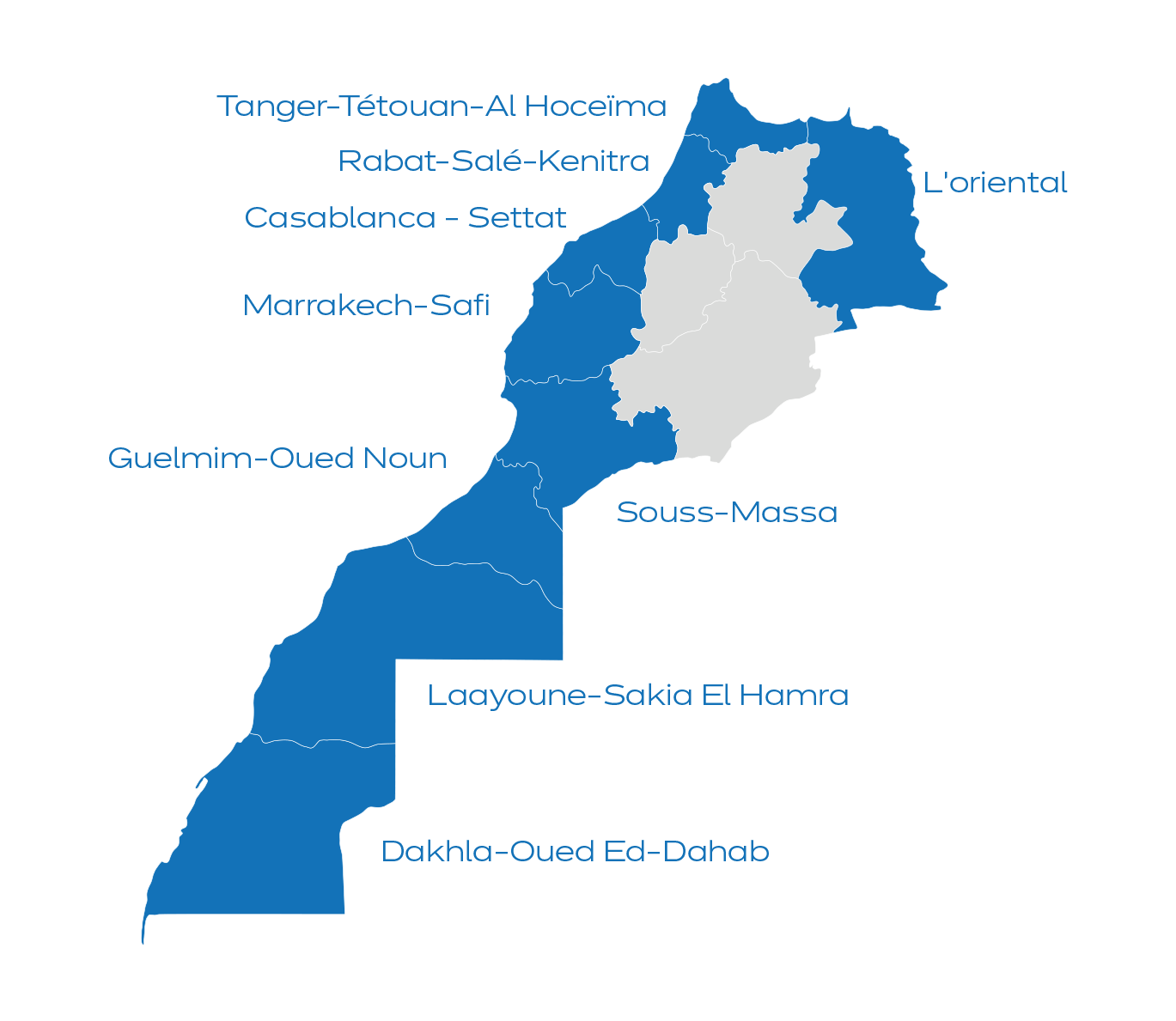
Umbrina
Ficheries,White fish
The umbrina is a bony fish, belonging to the order of Perciformes like the grouper, the mullet, the sea bream, and especially the meager, which resembles it. This fish lives in the Mediterranean Sea and the Atlantic Ocean.
Visually speaking, it has a distinctive colouring, more or less silvery with oblique yellowish lines, going up towards the back. This fish has two dorsal fins and a short chin barbel. It also has a flattened body on the side and a rounded snout with a small barbel that protrudes from the lower jaw. The back and sides as well as the lower part of the fish are silver. The fins are golden with a black lower edge of the operculum.
Highly appreciated for its white and meaty flesh, the umbina generally measure between 30 and 70 cm, but some males can reach up to 150 cm and weigh up to 45 kg.
Varities
Argyrosomus regius (Meagre)
Sciaena umbra (Corb)
Umbrina canariensis (Canary drum)
Conditionnement
Frozen
Ice box
In bulk
Vacuum pack
Transformation
- Fresh umbrina
- Frozen umbrina
 Exportation 2020
Exportation 2020
9 T
Regions

Hake
Ficheries,White fish
It is a white fish species commonly found in sloping underwater areas. It is characterised by a pointed and bulky head, and a very tapered shape.
A dietary fish par excellence, it contains a significant amount of vitamins and minerals.
The hake, commonly known as merluccius merlucciu, is a marine fish of the family Merlucciidae. It is a round fish that measures 30 to 110 cm. Its body is elongated and has a light grey colour. It has a large mouth ending directly below the eye. Its teeth are sharp and well developed. The hake is distinguished from other gadidae by its lack of barbel and the presence of two dorsal fins, an anal fin, and a large mouth.
It is an exclusively marine fish that lives at great depths, up to 1000 m in saltwater. It only rises to the surface at nightfall.
Varities
Silver hake
White merluccius capensis
White merluccius gayi
Alaska pollock
Conditionnement
Cans
Frozen
Ice box
In bulk
Vacuum pack
Transformation
- Hake
- Frozen hake
- Frozen merluza
 Exportation 2020
Exportation 2020
90 T
Regions

Gurnard
Ficheries,White fish
Gurnard is a fish of the triglid family. It represents several fish species, including piper gurnard and Prionotus.
Gurnards share the ability to produce, with the help of their swim bladder, a kind of audible rumbling when they are injured or when they are taken out of the water. Gurnard also has a large, armoured pyramidal head and pectoral fins with sideburns, allowing them to walk at the bottom of the water. Its colour ranges from gray to red, to pinkish hues. Gurnard spawning period lasts from May to August.
Varities
Red gurnard (Chelidonichthys cuculus)
Tub gurnard (Chelidonichthys lucerna)
Gray gurnard (Eutrigla gurnardus)
Conditionnement
Cans
Frozen
Ice box
In bulk
Vacuum pack
Transformation
Fresh gurnard (Robio)
 Exportation 2020
Exportation 2020
26 T
Regions

Bream
Ficheries,White fish
Sparus aurata, more commonly known as bream, gilthead bream or sea bream, is a saltwater fish that lives close to the coast. The bream is an oval fish with a body protected by very thick scales with silvery reflections. There are at least 16 varieties of different colours ranging from gray to pink. Bream is mainly found in the Atlantic Ocean and in the Mediterranean Sea.
It is a bony species of the Sparidae family, and its size can reach up to 70 cm and 6 kg.
Valued for the quality of its flesh, it is one of the most consumed fish in the Mediterranean region. It is often confused with other edible species such as sargo or saddle bream.
Varities
Gray bream
Besugo (Pink bream)
Red porgy
Common pandora
Gilthead bream
Wild bream
Farmed bream
Common dolphinfish or mahi-mahi
Conditionnement
Cans
Frozen
Ice box
In bulk
Vacuum pack
Transformation
- Frosen besugo (pink bream)
- Frozen bream
- Fresh bream
- Frozen pink bream
- Frozen bream filets
 Exportation 2020
Exportation 2020
130 T
Regions

Wolffish
Ficheries,White fish
The wolffish is also known under the name of "Bass". The difference between these two names lies in the fishing site only. If it is fished in the Mediterranean Sea, it is called "wolffish". It is called a "bass" when it lives in the Atlantic Ocean. The name "wolffish" stems from the voracity of this fish. Indeed, the wolffish can swim with its mouth wide open in order to eat anything in its way, apart from plankton. Whether it is sardines, anchovies, mullet, eels, crabs, squids or even all shellfish, all are eaten by the wolffish, they have just to be smaller than it.
During its youth the wolffish, moves in schools, but it becomes a solitary fish in adulthood. In the summer, the bass likes to live near rocky shores and beaches with crashing waves. It is then line-caught by individual fishermen. Professionals fish it on the high seas, either with a line or a net.
It is a fish with a fusiform body. The head is much wider than the base of the tail. The most important volume is at the front, which gives a massive and chunky appearance to its body.
Varities
Sea bass
Trawl bass
Breeding sea bass
Conditionnement
Cans
Frozen
Ice box
In bulk
Vacuum pack
Transformation
- Fresh wolffish
- Frozen wolffish
- Frosen bass (wolffish)
 Exportation 2020
Exportation 2020
13 T
Regions


Fruits and vegetables
Morocco has a considerable agricultural potential that needs to be developed. Thanks to its geographical location, Morocco boasts an ecological diversity (fertile plains, wetlands, coastal areas, microclimates, mountainous areas, semi-arid and arid areas, desert, etc.) allowing for a varied range of possibilities in terms of plant production.
The fruit and vegetable sector covers an area of nearly 1,300,000 ha, including 1,060,000 ha of fruit plantations and 280,000 ha of vegetable crops. The average overall production is around 9 million tonnes, including nearly 3 million tonnes of fruits and more than 6 million tonnes of vegetables.
Early (out-of-season) crops are one of the pillars of this sector and rank high among exports.
[elementor-template id=”11792″]
Apples
Fruits and vegetables
The apple is an edible fruit produced by the apple tree. Apple trees are farmed worldwide and are the most widely cultivated species of the Malus genus. Visually speaking, the apple is a round fruit with a firm and juicy pulp. There are green, yellow, and red apples. The apple is one of the most consumed fruits in the world. Its popularity is due to the fact that it is available throughout the year. It is a fruit rich in pectin and vitamins, and is a great source of antioxidants. The apple stimulates the immune system and fights against the appearance of certain diseases.
Varities
Starking Delicious
Starkrimson
Gloden Delicious
Golden Smoothee
Dorcset Golden
Royal Gala
Ozargold
Anna
Fuji
Conditionnement
Crates
In bulk
Transformation
- Juice
- Jam
- Fruit salad
- Compote
- dried apple
- apple vinegar
 Exportation 2020
Exportation 2020
370 T
Regions

Pears
Fruits and vegetables
Pear is the fruit of the pear tree; a tree belonging to the Rosacea family. Visually speaking, the pear is a fleshy, seeded, elongated, and bulging fruit. Green or yellow, this fruit is an excellent source of fiber and vitamins. It is more than 84% water, in which are dissolved many minerals and trace elements such as potassium, zinc and copper. The pear is also distinguished by its antioxidant power and its anti-cancer properties. It is one of the most popular and consumed fruits in the world.
Varities
Wilder
Precoce Morettini
Coscia
Dr. Jules Guyot
Clapp Favorite
White Williams
Red Williams
Louise Bonne d’Avranches
Crassane Pass
Conditionnement
Cans
Crates
In bulk
Plastic bags
Transformation
- Juice
- Jam
- Fruit salad
- Compote
- Frozen
 Exportation 2020
Exportation 2020
50 T
Regions

Bananas
Fruits and vegetables
Banana is a fruit that comes from a herbaceous plant, the banana tree.
The banana tree is a herbaceous plant that is characterised by three phases during its development cycle: a vegetative phase of 6 to 8 months, a flowering phase of 3 to 4 months, and a fruiting phase of 3 to 4 months.
Rich in potassium, the banana helps regulate blood pressure, protects the body from cardiovascular accidents and may limit the formation of kidney stones. Its richness in fibers facilitates intestinal transit.
Varities
Dwarf Cavendish
Conditionnement
Crates
In bulk
Plastic bags
Transformation
- Banana leaf
- Dried
- Frozen
 Exportation 2020
Exportation 2020
16 T
Regions

Strawberry
Fruits and vegetables
Strawberry is a red fruit derived from the strawberry plant, a perennial plant belonging to the family of herbaceous plants, of the Fragaria genus (Rosaceae family). The strawberry is a small fruit of bright red color with small grains and a green stem. Its texture has medium firmness. From a nutritional point of view, the strawberry is rich in vitamins C, B1, P, and PP. It is also rich in minerals and is known for its ability to stimulate the immune system.
Varities
– Ever-bearing varieties (Rappella, Marastil, American everbearing, Brighton, Selva)
– June-bearing varieties
– Day-neutral varieties
Conditionnement
Barrels
Crates
Jars
Plastic bags
Punnets
Transformation
- Jam
- Juice
- Dried
- Frozen
- Strawberry pulp
- Strawberry puree
- Compote
 Exportation 2020
Exportation 2020
92 000 T
Regions

Cucumber
Fruits and vegetables
Cucumber belongs to the Cucurbitaceae botanical family. It is an annual and creeping plant. The male flowers are separated from the female ones, but remain on the same plant. The plant is said to be monoecious. Some varieties are gynoecious (only female flowers) or parthenocarpic (no pollination required). This vegetable is known for its high water content and has a low nutritional value. Cucumber is refreshing and is used as a natural laxative. However, it is low in vitamins and nutrients.
Varities
Poinsett
Admiral
Prestige
Ardo
Corona
Flamingo
Pepinex 69
Pepinova
Santo
Sweet Slice
Sweet Success
Conditionnement
Crates
Punnets
Transformation
 Exportation 2020
Exportation 2020
8 300 T
Regions

Carrots
Fruits and vegetables
Originating in Southern Europe, the carrot is a biannual root vegetable belonging to the Umbelliferae botanical family. From a nutritional point of view, carrots are full of vitamins and minerals essential for health, including vitamins A, B6, K, as well as phosphorus and potassium.
In Morocco, carrots are grown throughout the year.
Varities
Carrots
Organic carrots
Conditionnement
Cans
Crates
Frozen
In bulk
Plastic packs
Punnets
Vacuum pack
Transformation
Puree
Dried
Preserved
Cocktail
 Exportation 2020
Exportation 2020
1 900 T
Regions

Endive
Fruits and vegetables
Endive is a variety of bitter chicory that can be eaten both raw and cooked. This vegetable is light, easy to digest, crunchy, and bitter. Like most chicories, the endive contains a large amount of inulin, a carbohydrate that reduces cholesterol and triglyceride levels in the blood while stimulating the growth of good bacteria. Inulin also facilitates the absorption of minerals such as magnesium and calcium, of which the endive has considerable amounts.
Varities
Early varieties
Mid-season varieties
Late varieties
Conditionnement
Crates
Punnets
Transformation
 Exportation 2020
Exportation 2020
0,01 T
Regions

Potatoes
Fruits and vegetables
Potato, a perennial plant belonging to the Solanaceae botanical family, is native to South America. It is a root vegetable rich in phosphorous and vitamin B. In Morocco, the potato is the primary market gardening crop, both in terms of agricultural land and production.
Owing to their high content of carbohydrates, potatoes are listed under the starch family.
Varities
Barcelona potatoes
Manitou
Barna
Potatoes for storage
Potatoes for consumption
Seed potatoes
Désirée potatoes
Baby new potatoes
Liseta
Mondial potatoes
Nicola potatoes
New potatoes
Spunta potatoes
Ultra potatoes
Conditionnement
Bags
Crates
Frozen
In bulk
Punnets
Transformation
- Purée (Mashed)
- Chips
- Fries
 Exportation 2020
Exportation 2020
35 000 T
Regions

Bell pepper
Fruits and vegetables
Bell pepper is a plant belonging to the Solanaceae family. Though it is considered a fruit, it is commonly used in savoury recipes. Its taste, nutritional, and dietary qualities are well-balanced. from a nutritional point of view, bell peppers consist of 13% of dry matter, 6% of sugar, 2% of proteins, and a significant amount of mineral salts, particularly potassium salts. Additionally, bell peppers are rich in vitamins, namely vitamin C. It is worth noting that bell peppers are 4 to 5 times richer in vitamin C than lemon.
Varities
White peppers
Sweet peppers
Yellow sweet peppers
Organic sweet pepper
White sweet peppers
Orange sweet peppers
Red sweet peppers
Organic red sweet peppers
Green sweet peppers
Purple sweet peppers
Yellow pepppers
Medium long peppers
Orange peppers
Red peppers
Green peppers
Organic green peppers
Conditionnement
Bags
Crates
Frozen
In bulk
Punnets
Transformation
- Sauce
- Marinated
- Frozen
 Exportation 2020
Exportation 2020
106 000 T
Regions

Garlic
Fruits and vegetables
Garlic is a biennial plant that belongs to the Alliaceae botanical family. Having a pungent taste and smell, garlic is commonly used as a condiment in cooking. The head of the garlic (bulb) consists of several cloves. The garlic flower can be eaten as well.
Garlic is rich in manganese, copper, selenium, and phosphorus. It is also rich in vitamins, namely vitamin B6 and vitamin C. In addition, garlic contains fructans, a type of fibre that facilitates the growth of good bacteria in the intestine.
Varities
Garlic
White garlic
Conditionnement
Bags
Crates
Frozen
In bulk
Transformation
- Frozen
- Preserved
 Exportation 2020
Exportation 2020
9 T
Regions

Onion
Fruits and vegetables
Onion is the bulb of a vegetable plant. It is a species of biennial herbaceous plants of the Amaryllidaceae family (the large Alliaceae family). The onion is made up of white or pink, fleshy and juicy leaves, layered on top of one another. There are several varieties, some of which are particularly rich in antioxidants. The onion is an essential ingredient and is found in many culinary specialties and is used as a seasoning or as a vegetable. Whether raw, cooked, or fried, the onion is one of the most consumed vegetables in the world.
Varities
White onions
Scallions
Allium fistulosum
Yellow onions
Pink onions
Red onions
Green onions
Conditionnement
Bags
Crates
Frozen
In bulk
Transformation
- Onion for industrial use
- Scallion for industrial use
- Fried onion
- Cocktail
 Exportation 2020
Exportation 2020
57 000 T
Regions

Eggplant
Fruits and vegetables
Eggplant is a vegetable of the dicotyledonous plant (Solanaceae family). The term eggplant refers to both the plant and the fruit. Icon of Mediterranean gastronomy, eggplant is a fruit eaten like a vegetable. Eggplant has several varieties, although violet remains the most common.
Its popularity stems from its plump, juicy, and tasty flesh. Eggplant is low in calories and rich in fibers, antioxidants, copper, manganese, and B vitamins.
Varities
Violet of Florence
White
Round
Conditionnement
Cans
Frozen
In bulk
Plastic packs
Vacuum pack
Transformation
- Grilled eggplant
- Eggplant seeds
- Marinated eggplant
- Eggplant spread
- Candied eggplant
- In pieces
- Sliced
 Exportation 2020
Exportation 2020
700 T
Regions

Courgette
Fruits and vegetables
The courgette (zucchini) is the fruit of a plant with the same name. It belongs to the Cucurbitaceae family. The courgette is a summer squash that is one of the diuretic vegetables. It is picked before its maturity. According to its many varieties, this fruit, used as a vegetable, can be long or round, green or yellow.
The courgette has several benefits: In addition to being low in calories, it is rich in fibres, antioxidants, minerals and B vitamins. It creates a feeling of fullness and stimulates internaldigestion.
Varities
Virginia White
Grisette of Provence or greysini
Diamond
Green market
Long white bush
Gold rush
Violin or trumpet or butter courgette
Round of Nice
Black forest mini-courgette
Conditionnement
Cans
Frozen
In bulk
Plastic packs
Vacuum pack
Transformation
- Compotade
- Marinated
- Grilled
- Stuffed zucchini
- Zucchini in oil
- Bud seeds
 Exportation 2020
Exportation 2020
45 000 T
Regions

Avocado
Fruits and vegetables
Known as the green gold, avocado is a tropical species that adapts perfectly to subtropical climates with mild winters such as the Moroccan climate. The cultivation of avocado in Morocco has recorded a remarkable growth in recent years, including different varieties.
There are four dominant avocado cultivars in Morocco: Hass, Bacon, Fuerte, and Zutano. Zutano is the earliest variety, as it is harvested from mid-October to mid-December, while the Hass variety, who is particularly characterised by firmness and woody skin, is the latest variety. Hass is also the variety of avocado preferred by European consumers.
The climatic conditions of Morocco are favourable for the cultivation of avocado, as avocados grow best in warm and mild climates, and in places with strong sunlight.
Professionals use the latest production techniques and technologies. The sector continues to be more and more structured to guarantee a reliable and premium quality fruit.
The production is located mainly in the north of Morocco, particularly in the regions of Larache and Lgharb. The different varieties of this fruit are cultivated in Morocco over a large area and with a large production volume.
Varities
Hass
Bacon
Fuerte
Zutano
Organic avocado
Conditionnement
Crates
In bulk
Punnets
Transformation
- Guacamole
- Avocado oil
 Exportation 2020
Exportation 2020
35 000 T
Regions

Tomato
Fruits and vegetables
The tomato production areas in Morocco benefit from very favourable pedoclimatic conditions, more regular temperatures, long periods of sunshine, competitive production capacities, producers know-how and experienced workforce, the availability of cultivation land and state-of-the-art packaging, storage, and wrapping infrastructures.
Moroccan tomato exporters use the latest advancements in quality preservation from harvest to marketing, in order to ensure the arrival of healthy, better quality tomatoes in the export market, in full compliance with the regulations and standards in force.
The tomato is one of the predominant crops of Moroccan agriculture. It is the flagship product of Moroccan primeurs, and a leading product for export. It is a vegetable-fruit that has garnered many successes in cultivation and in export thanks to the commitment of the government and professionals in the conduct of great technical work at all levels: the variety choice, the choice of facilities and equipment, irrigation management, phytosanitary protection, and the integration of multiple new technologies allowing better crop management, thus emphasising sustainable development and energy saving.
95% of tomatoes in Morocco are produced in the Souss- Massa-Drâa region, while the rest of the production comes from Berkane and Safi. Glasshouse tomato crops are produced in the Agadir-Dakhla area.
Varities
Beefstake Tomato
Cherry tomato (cluster, elongated)
Cocktail tomato
Tomatoes on the vine (normal, round)
Kiwat tomato
Roma tomato
Round tomato
Glasshouse tomato
Ribbed tomato
Elongated tomato
Organic elongated tomato
Organic cherry tomato
Organic tomatoes on the vine
Organic oblong tomato
Organic round tomato
Daniela tomato
Pear tomato
Conditionnement
Cans
Jars
Punnets
Transformation
- Canned tomato
- Tomato sauce
- Tomato paste
- Dried tomato
- Frozen tomato
- Dehydrated tomato
- Tomato compote
- Tomato powder
- Tomato spread
- Semi-dried tomato
- Tapenade
- Tomato in oil
- Peeled tomato
- Seeds
 Exportation 2020
Exportation 2020
570 000 T
Regions

Grapes
Fruits and vegetables
In ancient times, grapes spread first in northern Africa where its cultivation extended along the Nile, on the shores of the Mediterranean, but also in northern Europe, namely Switzerland and Germany. It was not until around 600 B.C. that the Phocaeans, when creating Massila (Marseilles), brought the grapevine to Gaul. In Morocco, grapevine cultivation dates back to the Portuguese who founded the city of Mazagan in the 16th century and introduced the cultivation of grapes.
The grape can be eaten fresh or consumed in wine. The Doukkali grapevines (region of Casablanca-Settat), whose creation dates back to 1929, were intended for the production of wine. Grapes grown in Morocco have relatively loose, well-formed, homogeneous clusters with a minimum weight of 250 grams. The berries' colour can range between red and purple, with an ellipsoidal shape and a large size that can exceed 7 g. They are pulpy, very sweet, and have a thick skin. The Doukkali grape enjoys a local and international reputation thanks to its specific taste, its firmness, and its high sugar content.
The main production regions for table vines are Doukkala, Haouz, Benslimane, Rabat-Salé, Khemisset, and Essaouira. These regions account for 71% of the total area.
For the wine grapes, most of the vineyards are concentrated in the regions of El Hajeb, Khemisset, Meknes, Gharb, and Moulouya, which cover more than 88% of the total area.
Varities
- ‘- Wine vineyard: Cinsault, Carignan, Alicante, Bouchet, and Grenache
-The main table varieties: Doukkali, Italia’s Muscat, Valency, Abbou, Boukhanzir, Muscat of Alexandria, Alfonse Lavallée, Adari, Cardinal, Madelaine, Prima, Grapaes, Victoria, Red Globe, Sugroane, Early Sweet, Flame, Gaia, Bulgaria, Black
Conditionnement
Crates
In bulk
Punnets
Transformation
- Grape drink
- Grape seeds
- Grapeseed oil
- Grape juice
- Grape nectar
- Grape syrup
- Frozen grape
- Grey grape wine
- Pink grape wine
- Red grape wine
- White grape wine
 Exportation 2020
Exportation 2020
6 000 T
Regions

Green beans
Fruits and vegetables
Green beans are a determined dwarf plant with an upright growth habit. The plant produces dark green pods 13 to 17 cm long. Moroccan production is characterised by extra-fine beans with a diameter of 4 to 6 mm. It is mainly produced in the province of Skhirat-Temara on an area of around 800 ha. The majority of the production is exported to France, Switzerland, and the Gulf countries.
Green beans have been cultivated in the region since the French colonisation. They are a widely consumed vegetable in the West where they can be packaged fresh, canned, or frozen, and thus consumed all year round. Their first appearance was about 500,000 years ago, when they were appeared in Ecuador, and later diversified in Mexico and the Andes. Their cultivation is of great importance in Indian civilization, but it was not until the time of the great explorers of the New World that the first beans reached the European continent. Consumed since the 19th century as a fresh vegetable, beans are now part of many culinary traditions.
Varities
– Dwarf varieties: Morgane, Belna, and Vernandon
– Climbing varieties: Crystal, Diamond (adapted to greenhouses)
– Butter beans
– Helda beans
– Organic green beans
– Filet green beans
– Thin green beans
– Green beans for industrial use
Conditionnement
Bags
Crates
In bulk
Plastic packs
Punnets
Transformation
- Dehydrated green beans
- Cut green beans
- Trimmed green beans
- Green beans for industrial use
 Exportation 2020
Exportation 2020
140 000 T
Regions

Watermelon
Fruits and vegetables
Traces of the watermelon cultivation are found since ancient Egypt and all around the Mediterranean. This fruit needs a warm environment to grow and reach full maturity, which is why its cultivation has developed in hot countries, especially in Africa. It is also widely cultivated in the United States, where it is often associated with the emancipation of black slaves. Once free, these latter cultivated watermelon.
Watermelon is grown on Harch and Triss soils at altitudes ranging between 1,100 and 1,300 meters. The Meslagh variety is produced along the Meslagh river in the commune of Sidi Boutalayb in the province of Boulemane. The watermelon sector occupies a total land area of 4,450 ha for an annual production of 165,050 tonnes.
Meslagh watermelon is characterised by its sweet taste with a firm and crunchy texture; juicy and granulated. It is mainly consumed as a dessert or juice. The greater the weight of the fruit, the more one can say that the fruit has reached maturity. The watermelon should sound hollow when struck lightly; a sign that it will have a pleasant taste.
In Morocco, watermelon is cultivated in the central and southern regions of the country, with a concentration in the region of Marrakech-Tensift-Al Haouz (37%) and in Souss Massa (19%). Watermelon cultivation thrives at high temperatures. However, the highest yields are recorded in the Gharb region thanks to its water availability and its favourable pedoclimatic characteristics.
Varities
– Seeded: Sangria, Fiesta, Calsweet, Royal
– Seedless: Nova, Laurel, Fire Cracker
Conditionnement
In bulk
Transformation
- Watermelon seeds
- Frozen watermelon
- Watermelon syrup balls
 Exportation 2020
Exportation 2020
250 000 T
Regions

Chili/Hot pepper
Fruits and vegetables
Chili/hot pepper’s cultivation dates back to the colonial period, and it was introduced to the Moroccan Kingdom in the 1920s. Hot pepper is marketed on the national level as well as the local one, where it is consumed fresh similar to vegetables. It can be packaged as a powder, dried, or made into sauce or “harissa” to enrich the taste of several dishes.
Exports
(In all forms, in tonnes per year) The data are up to the end of April 2021.
Hot pepper is characterised by its intense spiciness, which may surpass 20,000 on the Scoville scale. Its pulp is thin with a distinct aroma, and the fruit itself varies between 10 and 14 cm in length. Hot peppers are green and turn red as they ripen. It is in the Mohammedia region where most of the cultivation is done on an area of about 60ha. The annual production of hot pepper is 720 tonnes.
Mohammedia’s natural environment, particularly its salinity, suggests that if cultivated beyond this geographical area, the distinct pungency and aroma of the product are no longer found. Therefore, the hot pepper has earned its highly appreciated characteristics thanks to this microclimate and a valley-enclosed agricultural area.
Varities
White chili
Organic chili
Hot pepper
Habanero hot pepper
Jalapeño Pepper
Tabasco pepper
Conditionnement
Cans
In bulk
Jars
Transformation
- Marinated
- Dried
- Ground
 Exportation 2020
Exportation 2020
22 000 T
Regions

Sweet pepper
Fruits and vegetables
The Nyora is native to Central America, and the conquistadors were the ones who imported it to Spain, where it spread rapidly all over the country and in Morocco as well. It is a pepper that does not burn, widely cultivated in the Beni Mellal-Khenifra region, a region that produces an excellent crop yield owing to its favourable climate. The fruit represents the essence of a powdered condiment used in Moroccan cuisine as food colouring, and it develops its scent through long-term drying in the sun.
The Beni Mellal-Khenifra region ranks first in the production of sweet peppers in the Kingdom, with 86% of the overall production. The sweet pepper, also called Noria, is used to produce paprika, a commonly used spice all around the world. As it is used in various recipes, the Noria may also be used in food colouring, and in the pharmaceutical and cosmetic industries. In Morocco, the average production of the fruit to be harvested is between 20,000 and 35,000 tonnes, 2,000 to 5,000 dried fruit tonnes out of which are ready to be processed.
Varities
Bola Roja
Bola Chata
Bola Largaet Lukus
Nyora
Padrón peppers
Sweet green pepper
Conditionnement
Cans
In bulk
Jars
Transformation
- Marinated
- Dried
- Ground
 Exportation 2020
Exportation 2020
1,5 T
Regions


Citrus
Morocco’s citrus fruit industry has gone through a remarkable evolution, propelled by the combined efforts of the government and the sector’s professionals, particularly in modernising produce beneficiation and export promotion toolkits. The reputation of Moroccan citrus fruits is well established and internationally recognised for top quality and impeccable taste. Morocco grows many varieties of citrus fruits, with the main categories being oranges, clementines, and mandarines.
[elementor-template id=”11793″]
Grapefruit
Citrus
The Grapefruit is a citrus fruit from the grapefruit tree. This citrus fruit has a thick orange peel and a pulpy flesh with a bitter taste. The flesh is segmented and ranges in color from pale yellow to dark pink, depending on the variety. Low in calories, the grapefruit has significant antioxidant power and a low glycemic load. This refreshing fruit, rich in vitamin C, has multiple health benefits, especially against cancer and cardiovascular diseases.
Varities
Citrus × paradisi
Conditionnement
Bags
Crates
In bulk
Punnets
Transformation
- Grapefruit juice
- Candied grapefruit
- Grapefruit peel
- Organic grapefruit
- Grapefruit for industrial use
 Exportation 2020
Exportation 2020
70 T
Regions

Lemon
Citrus
The lemon tree is believed to have originated in Kashmir, a region located in northern India and Pakistan, and the far west of China. This fruit-bearing tree produces lemon, a citrus fruit that has therapeutic properties. It is widely known for its antiviral and antibacterial properties, as well as its ability to stimulate the immune system. Squeezing the juice out of the lemon is one of the most common methods to reap its benefits.
The lemon tree blooms several times a year (up to 4 times). Due to its sensitivity to cold weather, this tree is mainly cultivated in the Mediterranean basin, the coast of California, and the semi-tropical areas of Piedmont (Himalayas, Andes).
There are 2 types of lemons: sweet and sour. The most common type of lemons is the sour one. Sour lemons are rich in vitamin C, contain a juicy flesh, and have a long shelf life. The storage period can range from a few days to several months depending on the peel's color: the more yellow the lemon, the less time it can be kept. This storage capacity has facilitated the export of lemons around the world; a process that has been carried out since the dawn of time.
Varities
Yellow lemons. Eureka (the most cultivated)
Meyer lemons
Caviar lemons
Buddha’s hand
Yuzu
Limes
Combava or combawa or kaffir lime
Citron
Conditionnement
Bags
Crates
In bulk
Punnets
Transformation
- Lemon juice
- Candied lemon
- Lemon peel
- Lemon slices
- Frozen lemon
- Organic lemon
- Lemon for industrial use
- Degreened lemon
 Exportation 2020
Exportation 2020
10 000 T
Regions

Orange
Citrus
Created thousands of years ago in Southeast Asia, the orange is one of the most consummed fruits in the world.
This fruit did not gain its popularity in Europe untill the 15th century thanks to the great trading expeditions. To date, the orange is the 4th most cultivated fruit in the world. The passion for this fruit, apart from its sweet taste, stems from the many benefits it brings. Rich in vitamin C, the latter helps fight cold and fatigue. In addition, the orange is a fruit with low calorie content while being high in carbohydrates and antioxydants, thus providing the body with the necessary energy while taking care of its skin and bones.
The orange is the fruit of the orange tree belonging to the Rutaceae family. The blooming of the orange tree takes place from March to July. The orange tree is then covered with small, very fragrant white flowers. These flowers are used to make orange-blossom water, frequently used in perfumery and in baking. As for the harvest of the fruit, it begins in autumn. Depending on the fruit varieties, the harvest may last up to 6 months.
Varities
Maltese
Late
Midnight
Navel
Salustiana
Blood orange
Conditionnement
Bags
Crates
In bulk
Punnets
Transformation
- Orange juice
- Frozen orange
- Orange puree
- Candied orange
- Orange semolina
- Orange peel
 Exportation 2020
Exportation 2020
115 000 T
Regions

Clementine
Citrus
Clementines are named after Father Clément, who accidentally discovered a cross between oranges and mandarins. In 1892, the French botanist Louis Charles Trabut noticed clementine plants and decided to name this newly discovered citrus "clementine" in memory of the religious man.
Clementines were introduced in the Triffa region in the 1930s. their taste qualities are distinctive to the area, which have enabled them to acquire an excellent reputation. They can be eaten fresh or made into juice.
The clementine is a fruit resulting from the cross between an orange and a mandarin. It is citrus fruit with a good and fresh taste that can serve as a snack or dessert after a meal. In morocco, two types of clementines are grown; the Berkane clone and the Nules. At an average weight ranging from 64 to 85 g, they contain between 40 and 56% juice, making them full of flavour. The nutritional values amount to about 46 kcal per clementine, providing carbohydrates, calcium, fibre, iron, magnesium, and vitamin C.
Varities
Natural
Late
Clemenules
Nour
Berkane
Maroc-Late
Conditionnement
Bags
Crates
In bulk
Punnets
Transformation
- Candied
- Juice
- Frozen
 Exportation 2020
Exportation 2020
210 000 T
Regions


Processed and local products
This field of production mainly covers cereals, food legumes, oilseeds, fodder crops, citrus fruits, olives, date palms, fruit trees, grapevines, market-gardening crops, berries, sugar beets, argan, medicinal and aromatic plants, and other local products (cactus, saffron, roses, carob trees, capers, etc.), as well as organic farming.
[elementor-template id=”11794″]
Olive
Processed and local products
The olive tree grew in the 12th millennium before our era has known real forests. It was not until the sixth century BC that humans began to domesticate it. From the 16th century BC, the Phoenicians implanted it in all Greece and in the Mediterranean basin. It was through Massilla (Marseille) in 600 BC that the olive tree arrived in Gaul. Following a period when it was slightly forgotten after the fall of the Roman Empire, the Crusades and the Middle Ages gave the tree back its status and it resumed its expansion all around the Mediterranean. The olive tree and its fruits are often associated with longevity, as some trees in the south of France are known to be centuries old. Hand picking is still the norm nowadays, especially for green olives as it guarantees the quality of the fruit and the olive oil.
The olives are predominantly of the Moroccan picholine variety. They can be considered as semi-organic, because the olives come from untreated trees and get exposed to small amounts of chemical fertilizers. Table olives are the result of an ancient know-how passed on from generation to generation that transforms bitter olives into sweeter ones. The olives lose their bitterness only under the effect of water and salt. Once prepared, they are consumed only after 6 to 12 months. Olives are used in many dishes, but also as an appetizer or snack. The range of use is as varied as the tastes offered according to the type of olives (black, green, etc.). They can also be flavoured with plants. In Morocco, olive production is located around Guercif, where there are more than a thousand olive farms with an irrigated area of about 3,500 hectares.
Varities
Moroccan Picholine
Meslala
canned olive
Picholine from Languedoc
Dehbia
Ascolano
Manzanille
Frantoio
Picual
Gordale Sevillana
Conditionnement
Bags
Barrels
Cans
Glass jars
Punnets
Vacuum pack
Transformation
Stuffed olive
Olive turning colour in barrels
Black olive
Green olive
Olive in R.H.
Olive pieces
Olive compote
Olive cocktail
Mixed olives
Pitted olives
Olives with salt
Candied olive
Olive slices
Greek style olive
Broken olive
Stuffed olive
Olive with chilli
Olive paste
Olive sprout H6
Tapenade
Spreading
Olive with lemon
Olive with garlic
Olive with oriental flavour
Olive with herbs
Spicy olive / olive oil
 Exportation 2020
Exportation 2020
70 000 T
Regions

Saffron
Processed and local products
Saffron is used in cooked dishes, but also in cosmetics and as a medicinal product. It is known as the most difficult spice to produce and therefore has a high market value. The plant grows well in Mediterranean scrublands and on arid or semi-arid lands. Precipitation, followed by several dry summers, plays a vital role in the cultivation of saffron, guaranteeing a good yield. Plants must be put under sunlight to increase the chances of having a good harvest and make sure the plants grow well. In Morocco, saffron is mainly cultivated in the provinces of Taroudant and Ouarzazate. Once dried, the stigmata measure between 5 and 25mm. They are of an intense red colour, are curved and fragile.
Saffron originated in Greece and then spread all around the Mediterranean. The plant was considered as originating from the Middle East, but has been present in many civilisations. The Chinese emperor Chen Nong mentioned it in his medical book in 2700 B.C. It is also one of the 500 medicinal substances cited in a set of Egyptian papyri (known as Ebers papyrus) considered to be the first medical treatise. The harvest of saffron has been done since ancient times, and to this day, solely by hand and requires long working hours from flowering to sorting. This arduousness explains saffron's high price and the very small quantities of the product put on the market.
Varities
Taliouine
Conditionnement
Bags
Boxes
Glass jars
Transformation
- Saffron Benat Tiab
- Saffron broth
- Saffron roots
- Crushed Saffron
 Exportation 2020
Exportation 2020
1 T
Regions
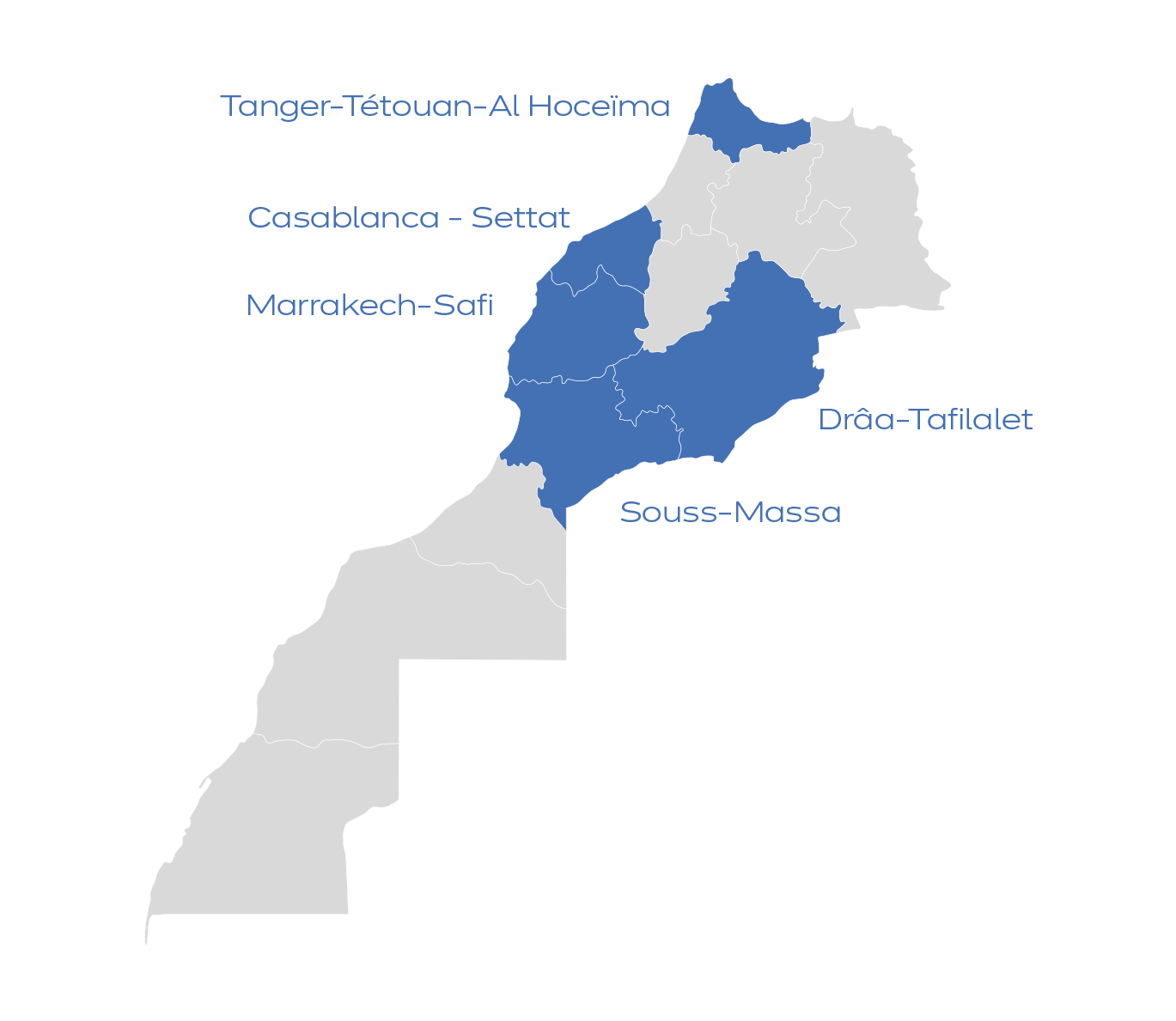
Capers
Processed and local products
An endemic species to Morocco, the caper flower adapts well to semi-arid climates and can grow in any type of soil. Capers are flower buds that have not yet bloomed. The caper bush grows in Morocco either spontaneously (14,000 ha) or it is industrially cultivated (about 20,000 ha). The main regions of agricultural production are Fez, Taounate, Marrakesh, and Safi. The total volume of production varies between 20,000 and 28,000 tonnes depending on the year. Capers are harvested solely by hand and require great finesse due to the flower's fragility. They are also perishable and are preserved in brine after 24 hours following the harvest.
The harvest of capers is done exclusively by hand from June to October/November. It is picked at different stages of fruit ripening: The smallest ones (5 to 7 mm) are the most valued due to their delicate flavour and strong aroma. They represent the best market value. Capers have been used since ancient times in Greek and Roman cuisines. They are usually used as condiments preserved in vinegar, but can also be preserved in salt or brine.
Varities
C. Spinosa
C. Ovata
Conditionnement
Barrels
In bulk
Jars
Pots
R.H
Trays
Transformation
- Capers with salt
- Capers with vinegar
- Stripped capers
- Capers in brine
 Exportation 2020
Exportation 2020
15 000 T
Regions

Argan oil
Processed and local products
The argan tree “Argania Spinosa” is endemic to Morocco. Writings dating back to the 12th century attested to the tree’s presence in the region since the mentioned period. In addition to fruit and oil production, but it also plays a key role in preventing erosion and the advance of the desert.
Since 1988, the biosphere reserve status of the Argania has been granted to the Souss-Massa region. In this region, many hectares are cultivated so as to maintain the species and ensure a sustainable economic benefit to the local populations.
Argan, out of which argan oil is produced, is an endemic tree to Morocco. Morocco remains the only region in the world where argan grows, and it represents an real wealth to the Kingdom, both at the tangible and intangible levels. The almond-shaped fruits, from which the oil is extracted, are hand-picked then grinded on mills. The argan tree typically grows in the south-west Morocco, but it also grows in the province of Berkane.
Varities
Food use
Cosmetic use
Conditionnement
Barrels
Bottles
Cans
Glass bottles
Plastic bottles
Transformation
- Roasted argan oil
- Unroasted argan oil
- Argan based essential oils
- Residues
 Exportation 2020
Exportation 2020
1 300 T
Regions

Extra virgin olive oil
Processed and local products
Olive oil has been known and used since ancient times. All the peoples of the Mediterranean used it for their cooking as well as for cosmetic purposes, and it was frequently used for the preservation of other foods. Evidence of its use can be traced back to 8,000 years prior to our era. Olive oil trade within the Mediterranean region flourished with the Phoenician, Greek, and Roman civilisations and the use of amphorae for its storage. Near Naples, olive oil residues dating back to 2,000 years were found in glass bottles.
Moreover, the reputation of olive oil is well established as a beneficial product for the body. It is a healthy oil, and used in many recipes all around the world.
Morocco enjoys an excellent reputation as an olive oil producer. The quality of olives enables their use for canning and oil production. Likewise, dried pomace is also marketed. In addition to its food-related use, olive oil is used for therapeutic purposes.
Varities
The Moroccan picholine represents 96% of olive trees in Morocco
Conditionnement
Barrels
Bottles
Cans
Glass bottles
Plastic bottles
Transformation
- Extra virgin olive oil (virgin)
- Virgin olive oil (virgin)
- Olive oil (Mixture of refined and virgin oil)
- Olive pomace oil (Mixture of refined pomace oil and virgin oil)
 Exportation 2020
Exportation 2020
10 000 T
Regions




